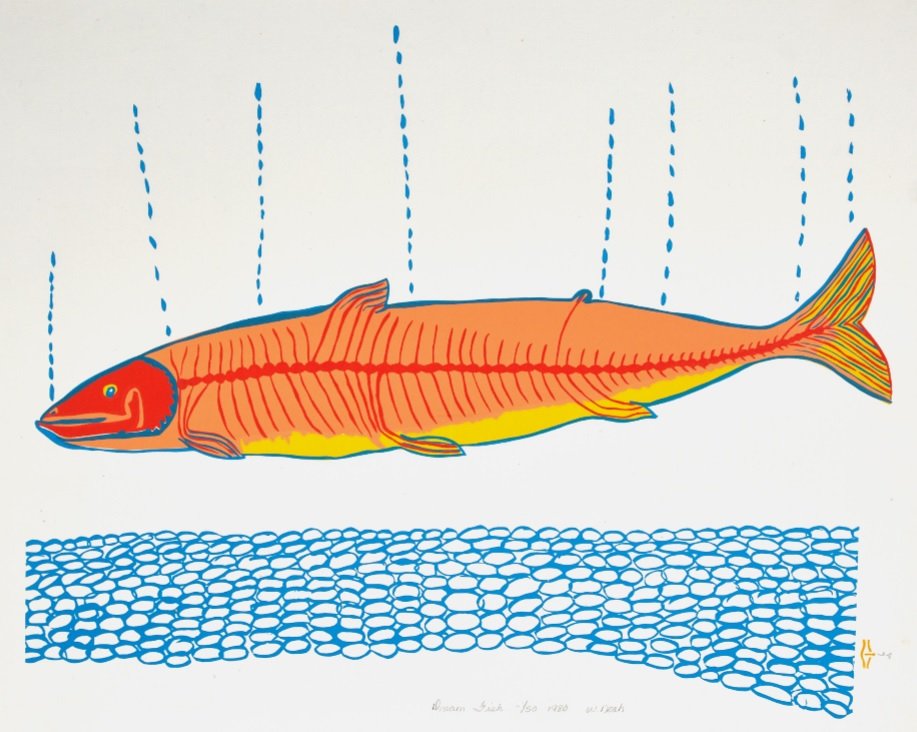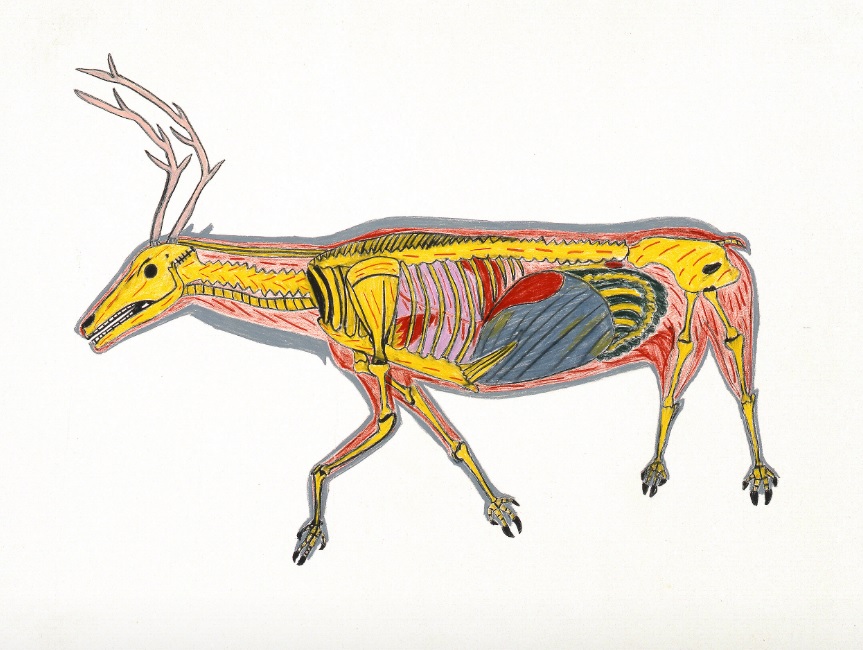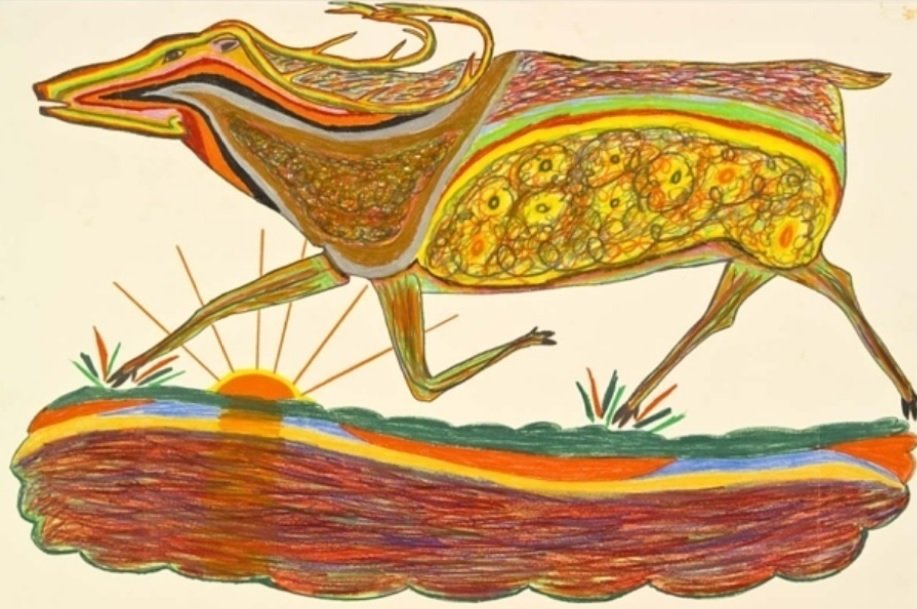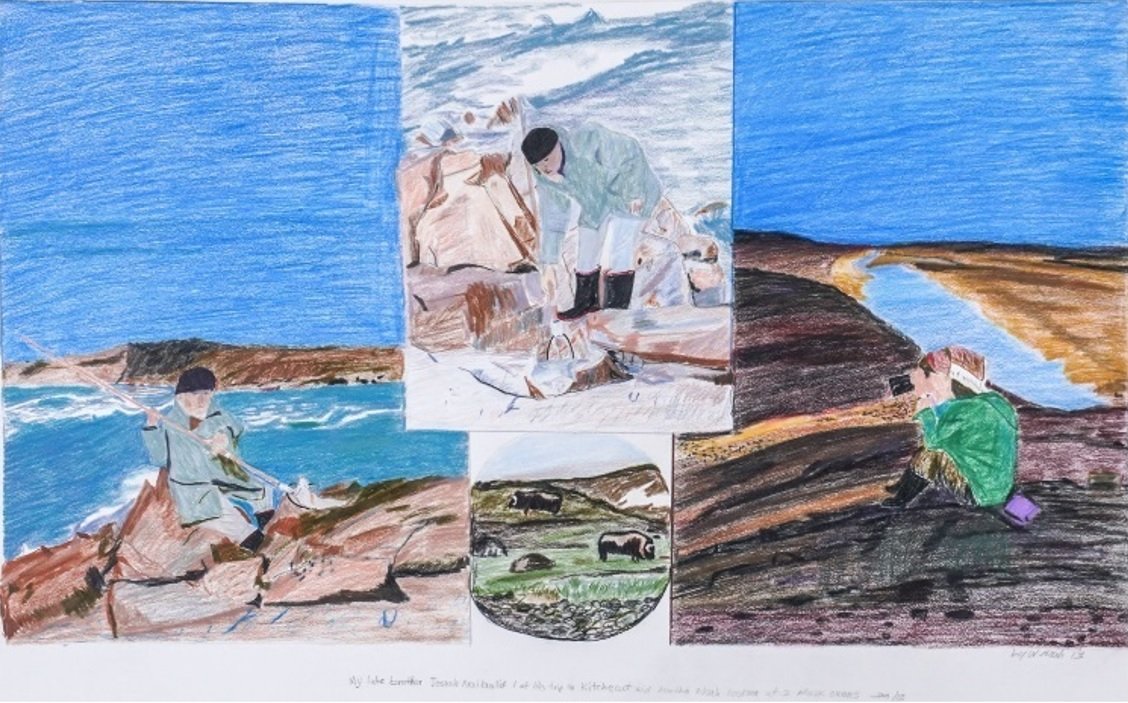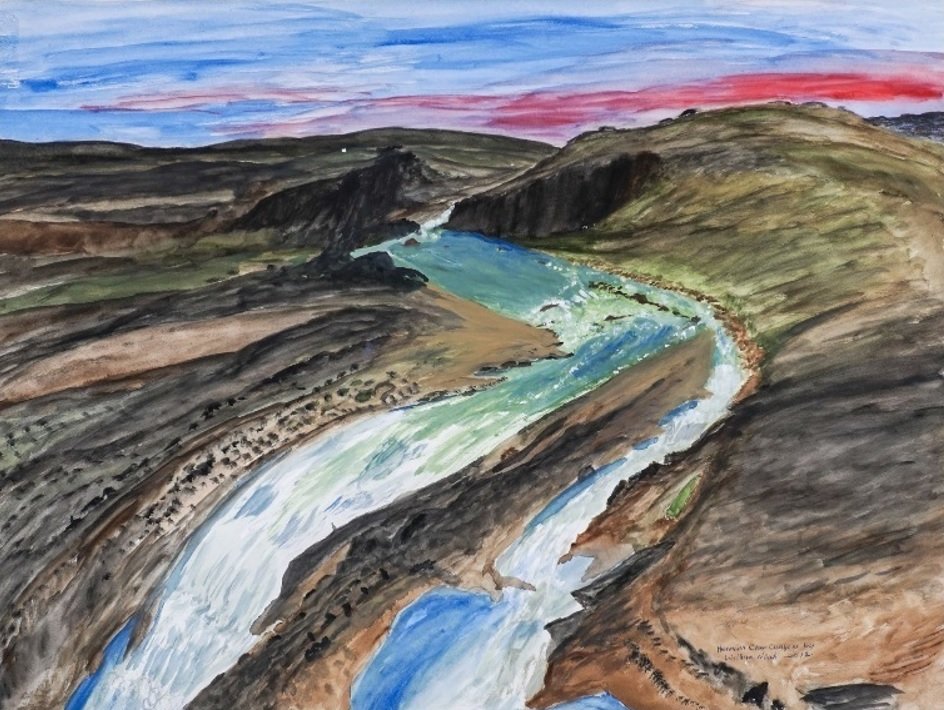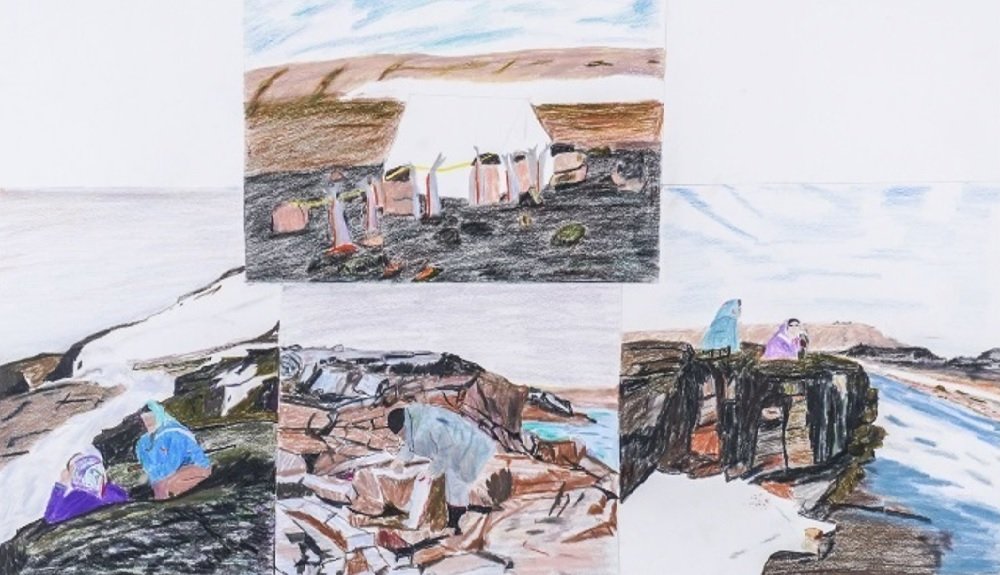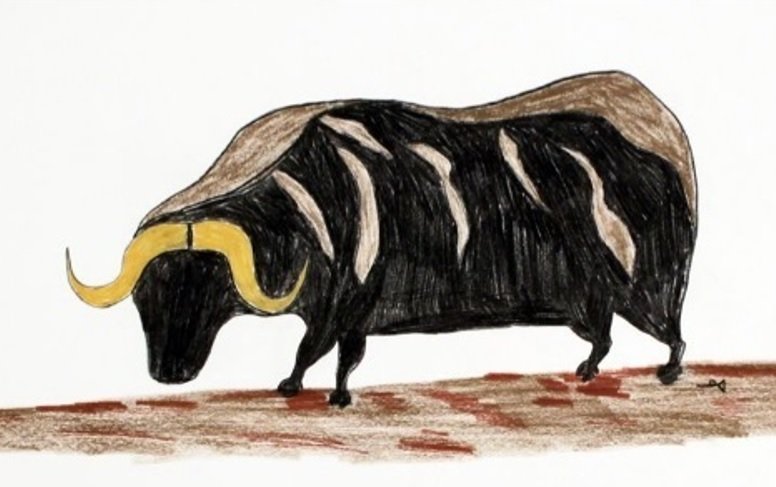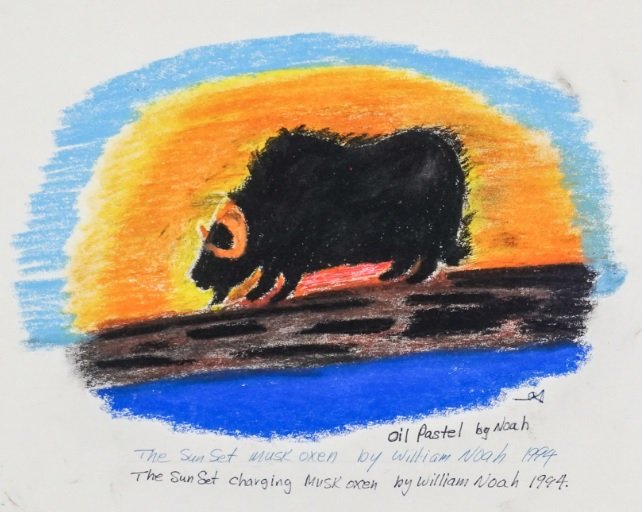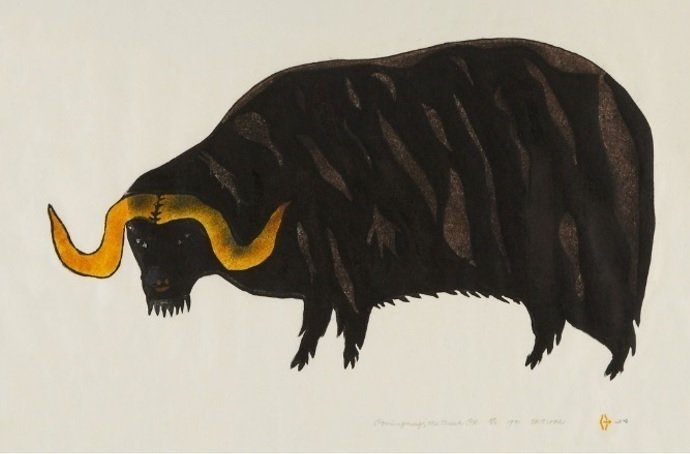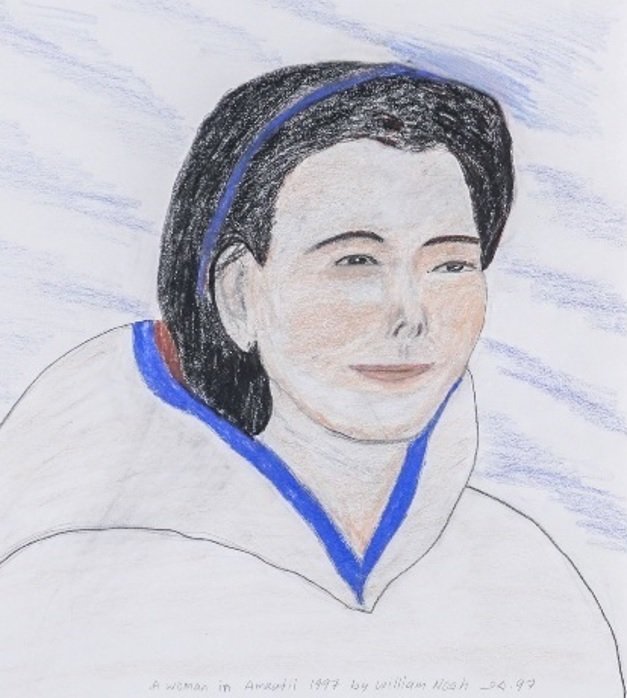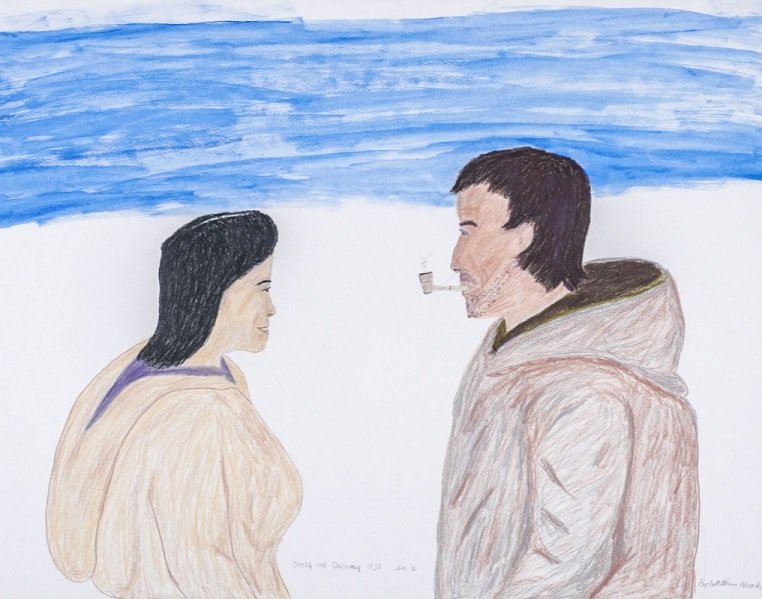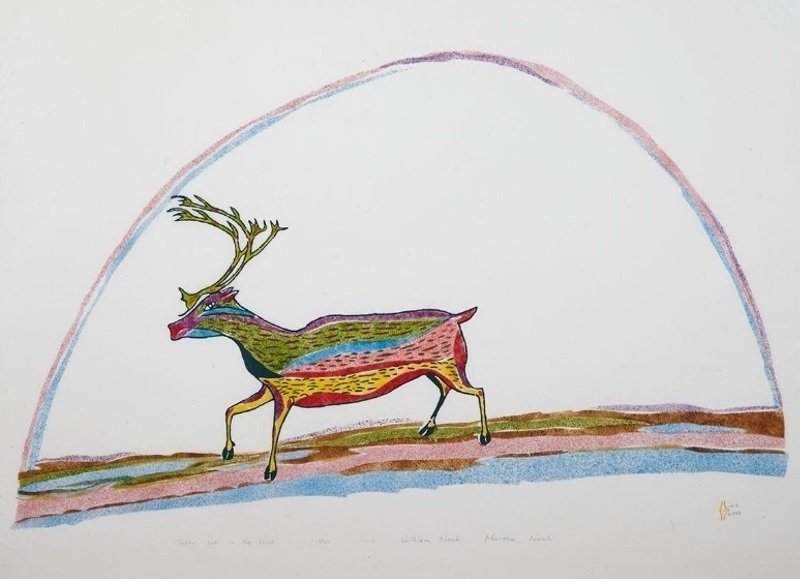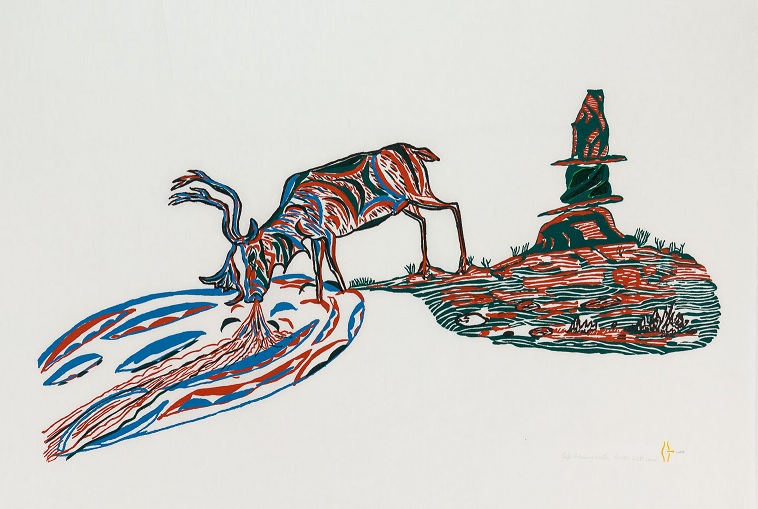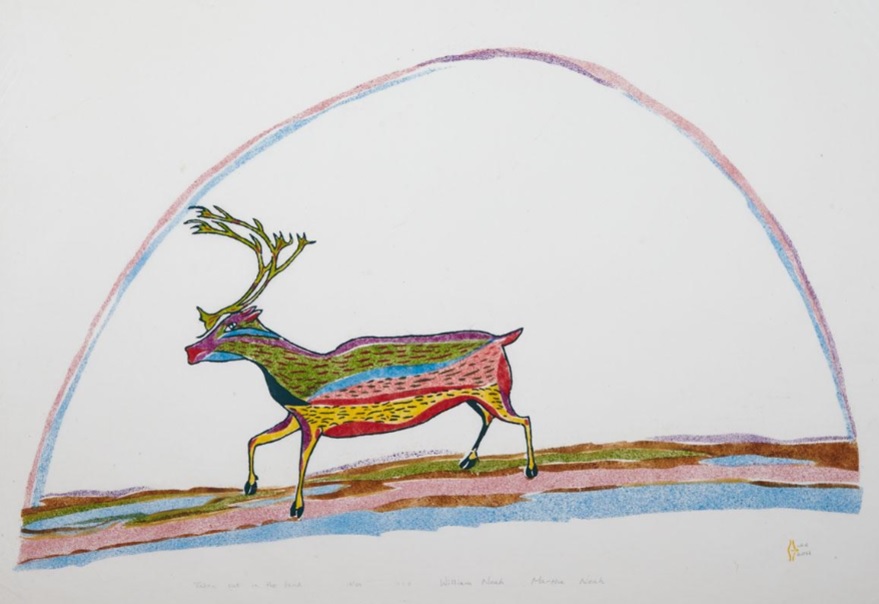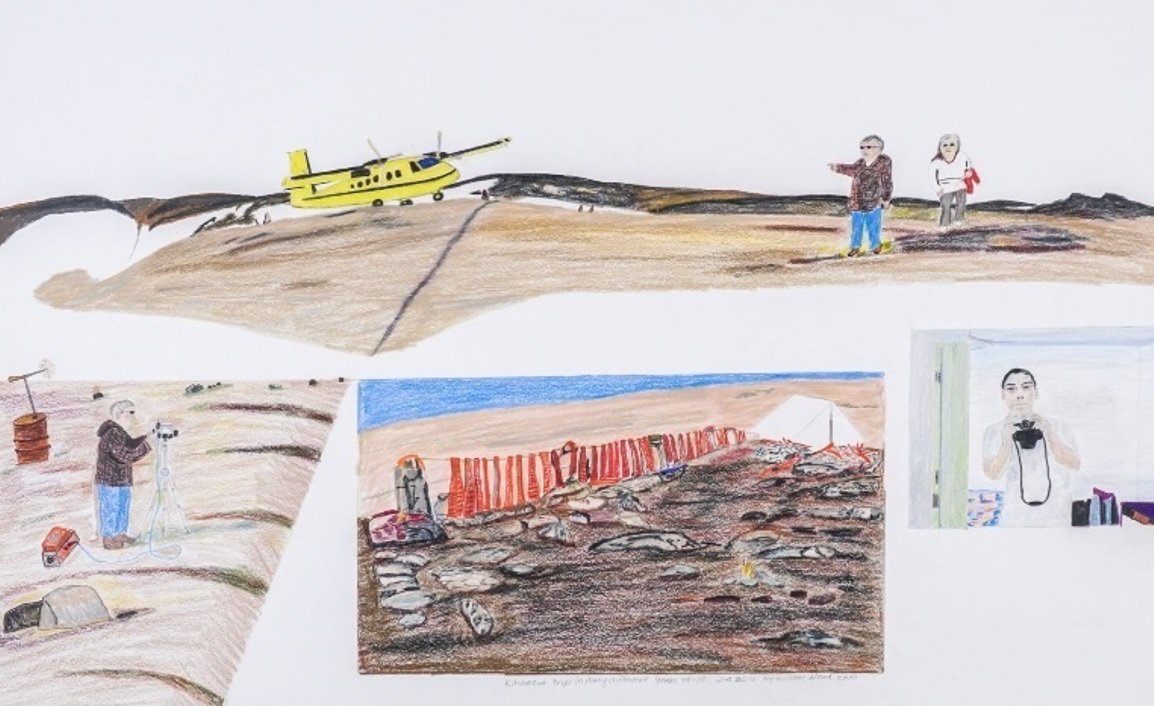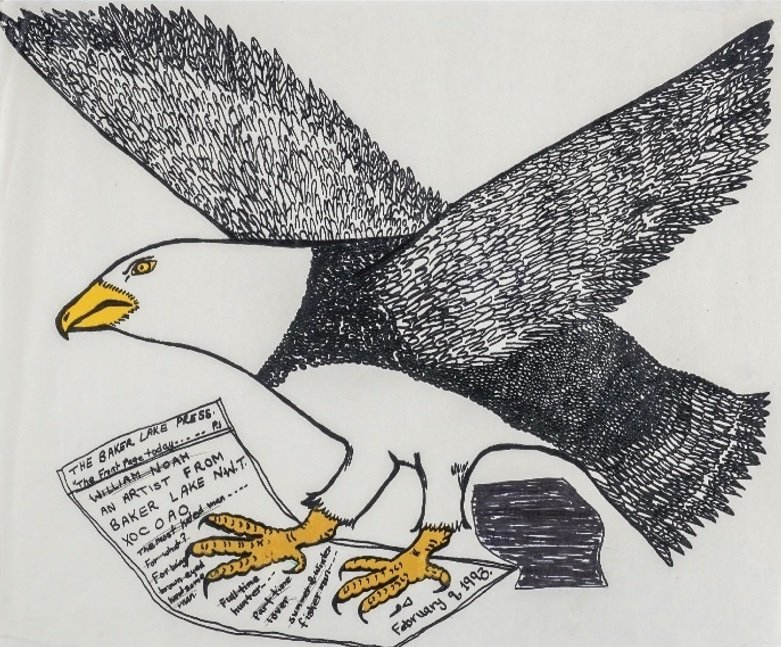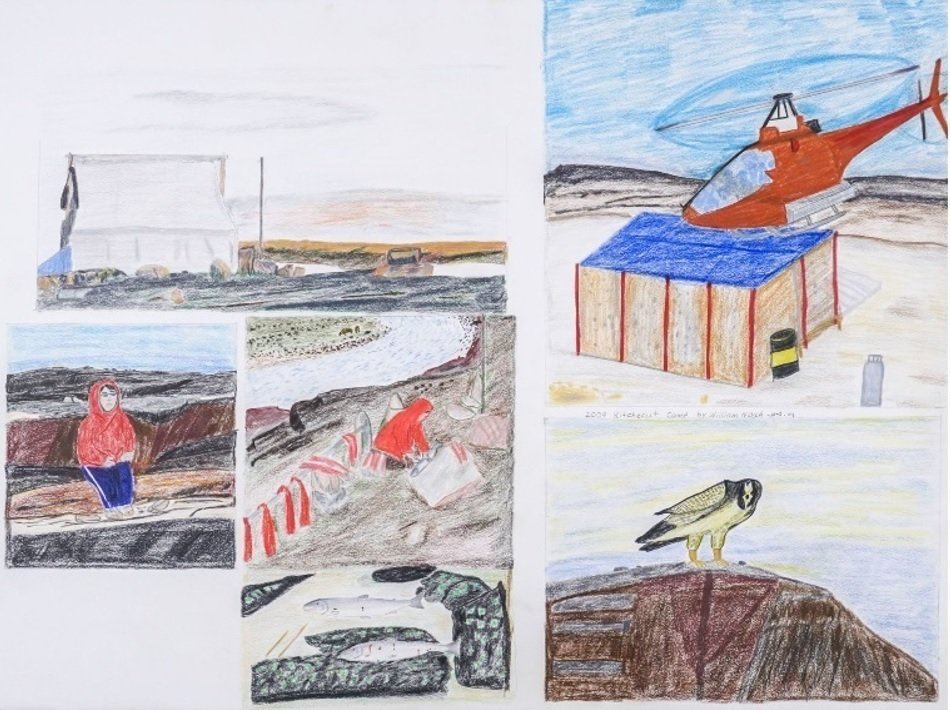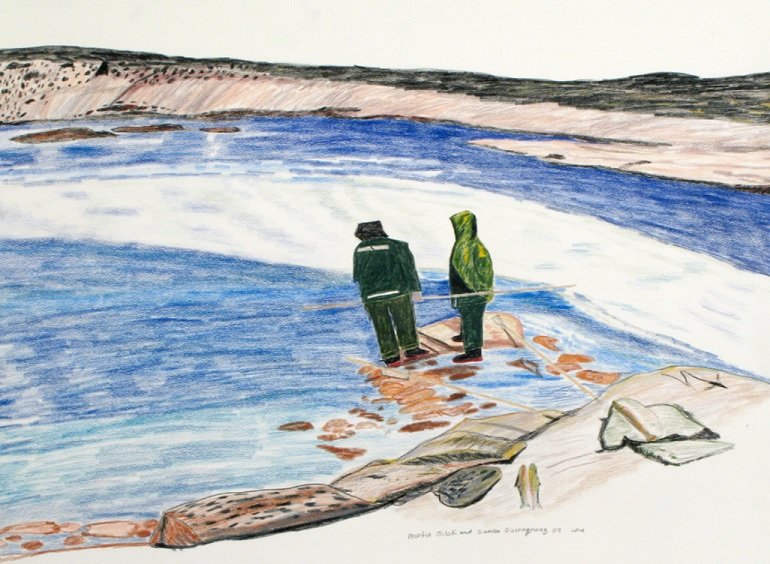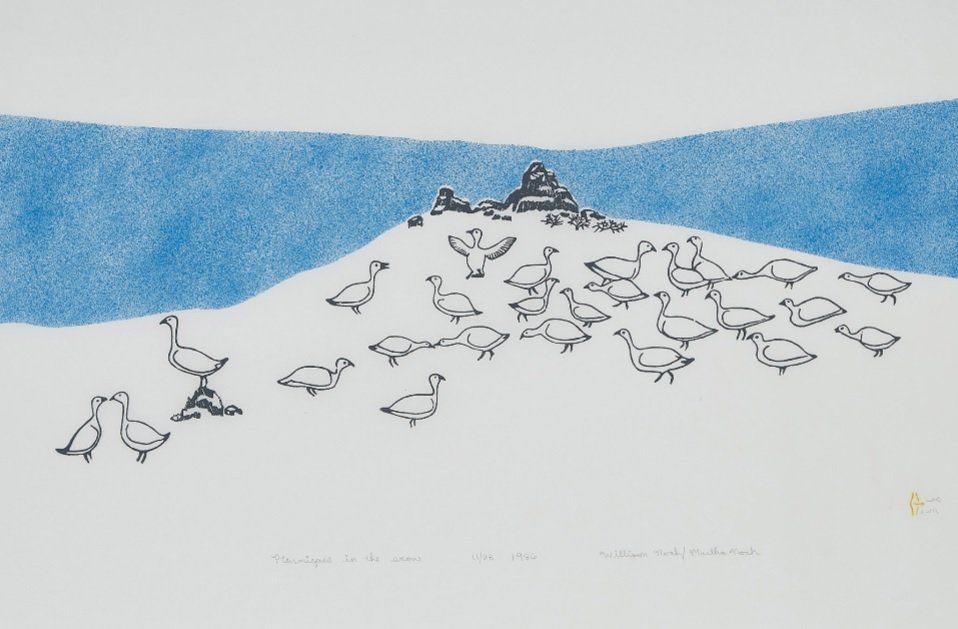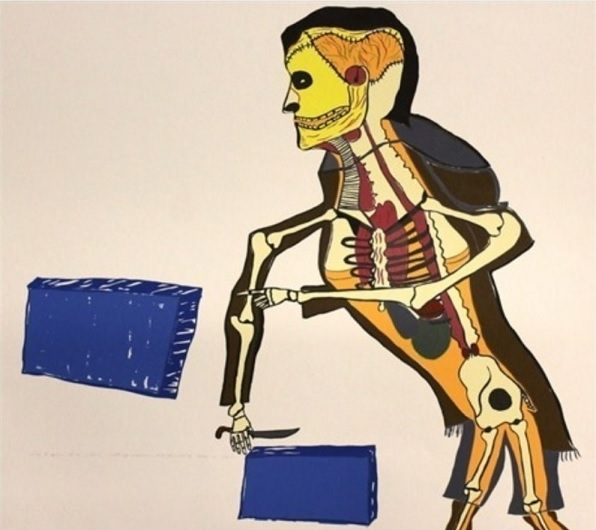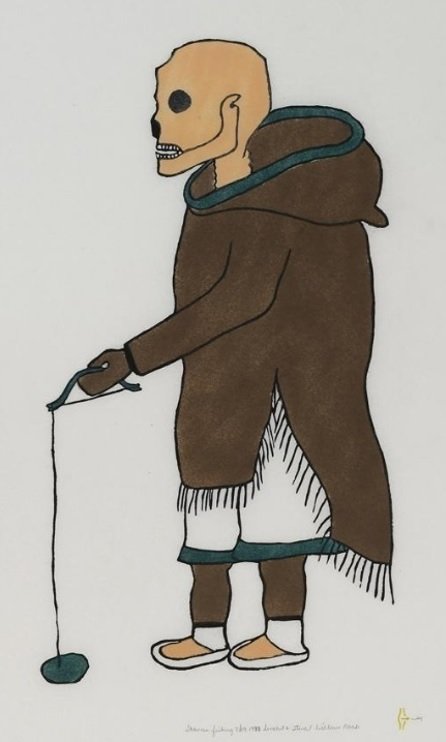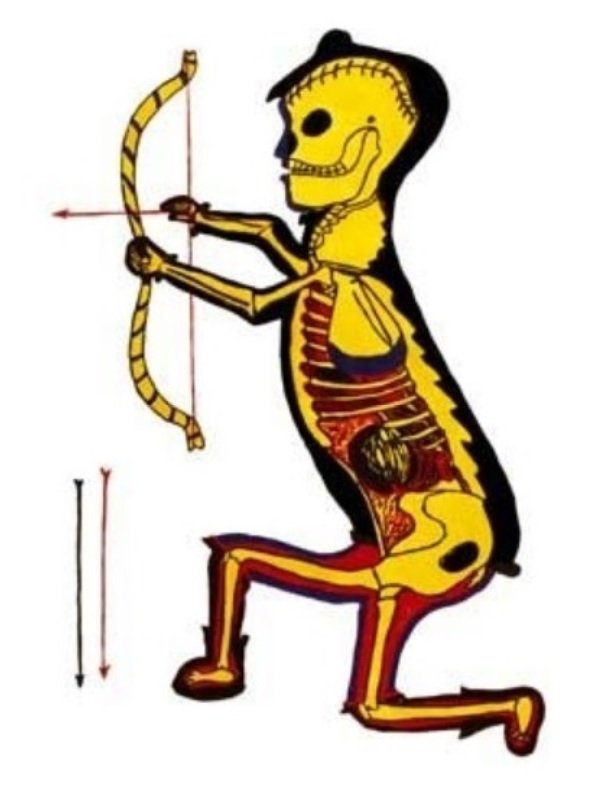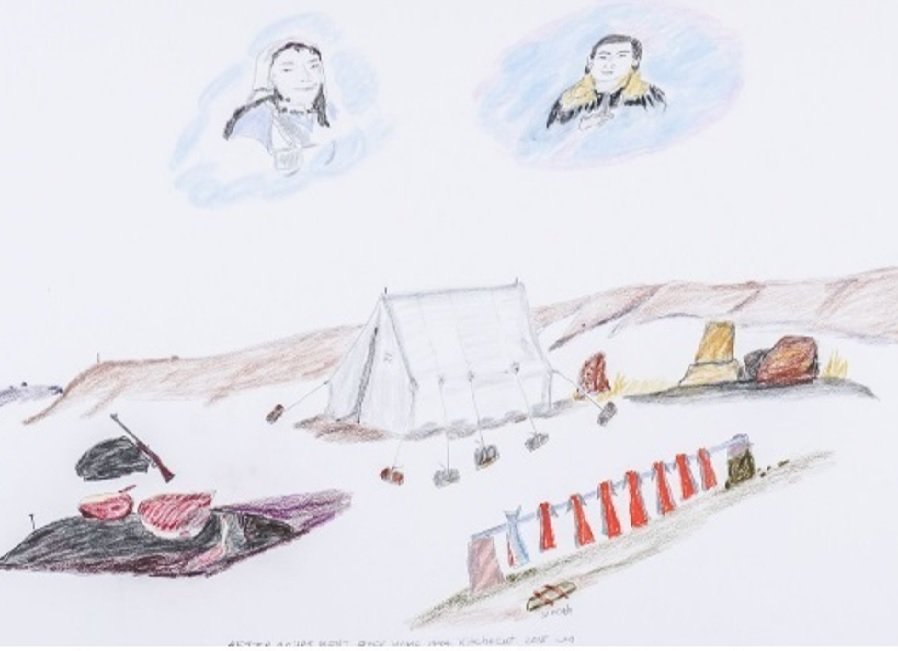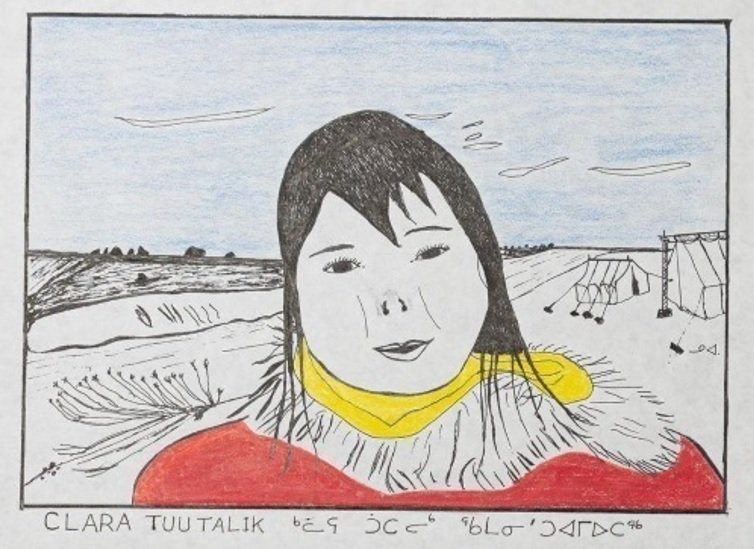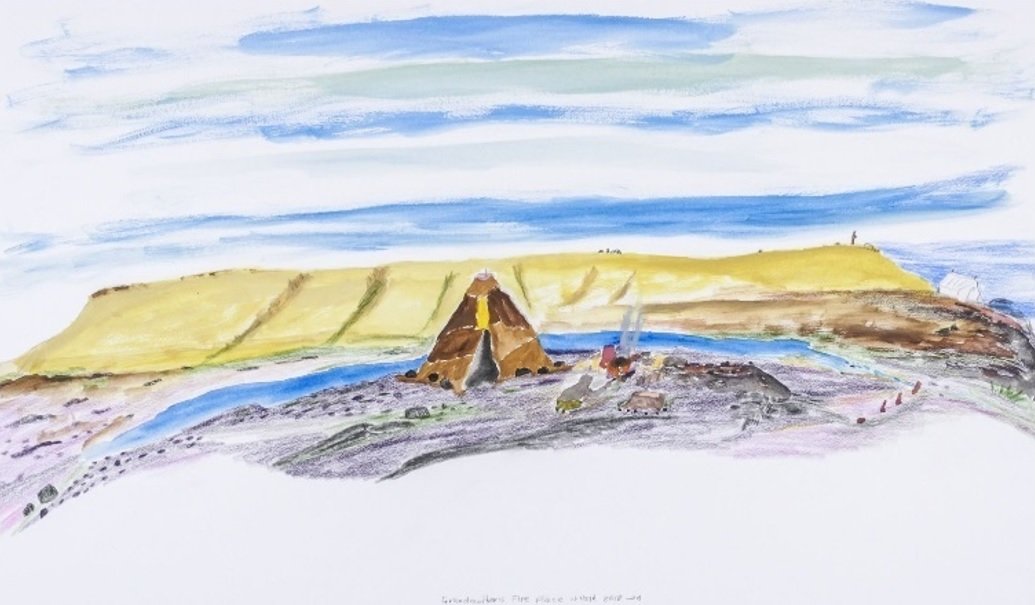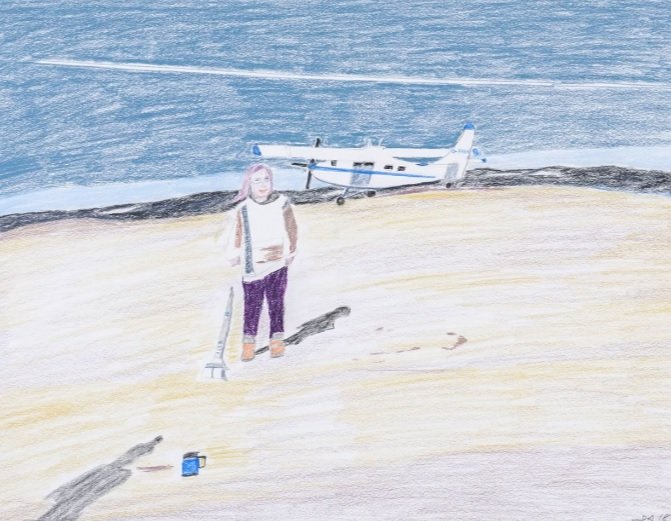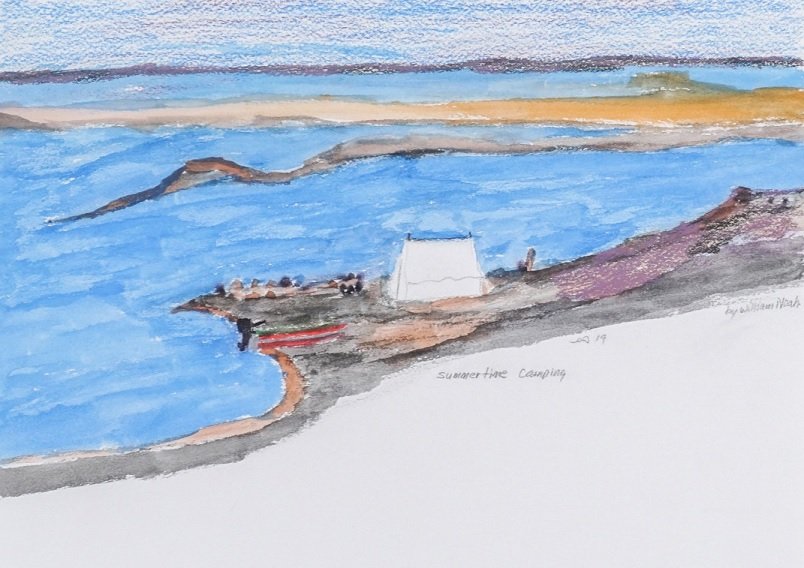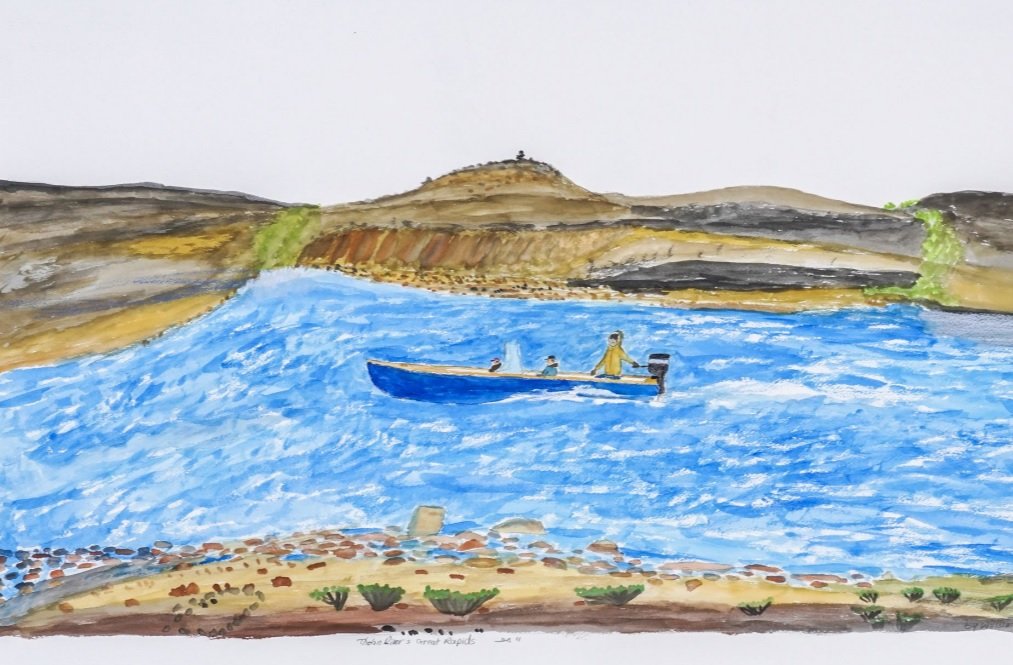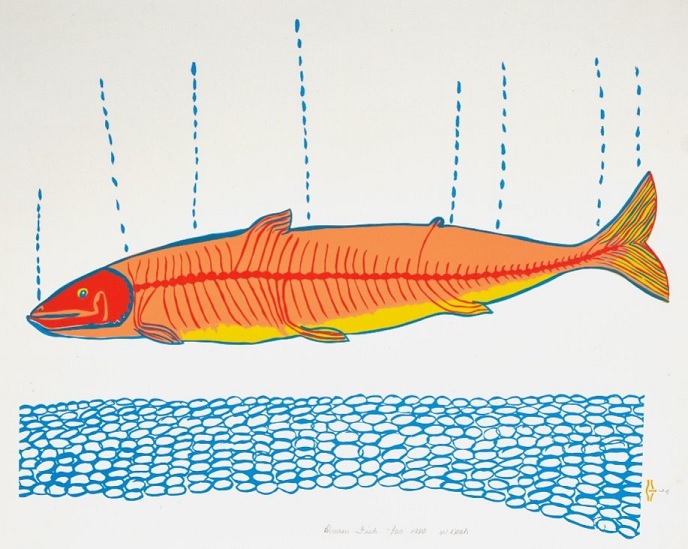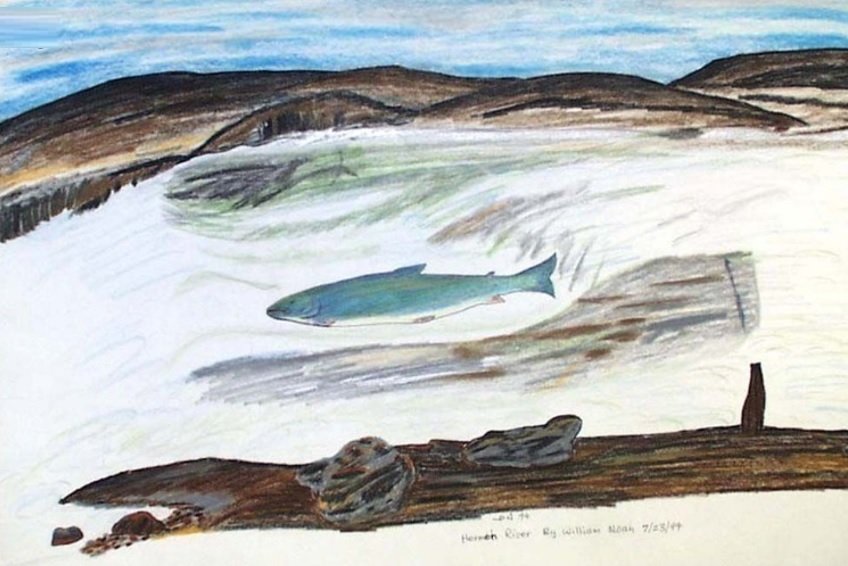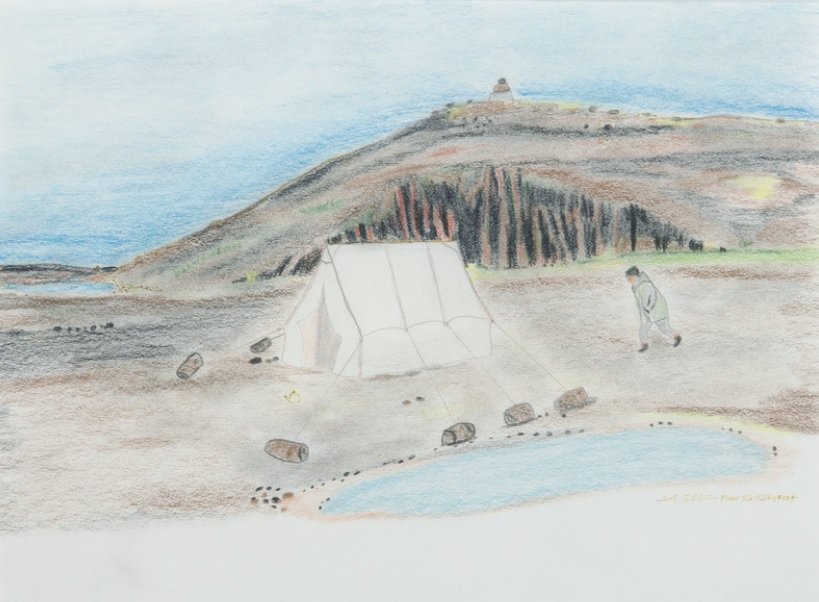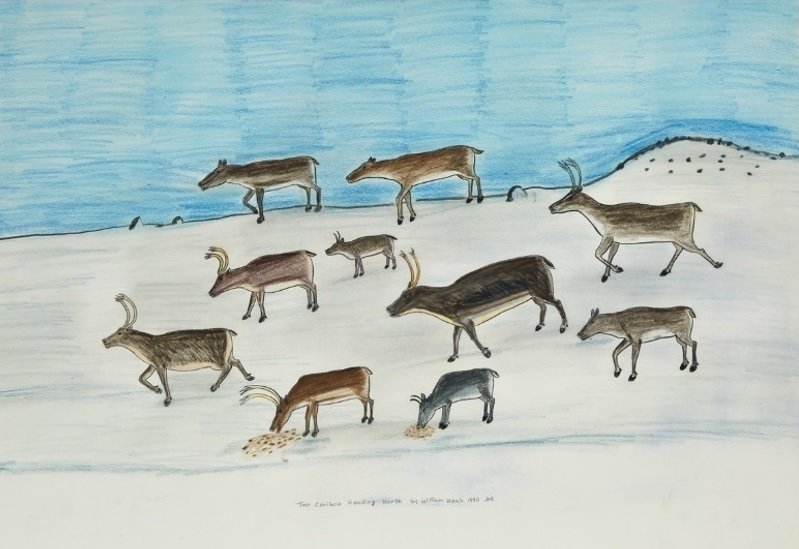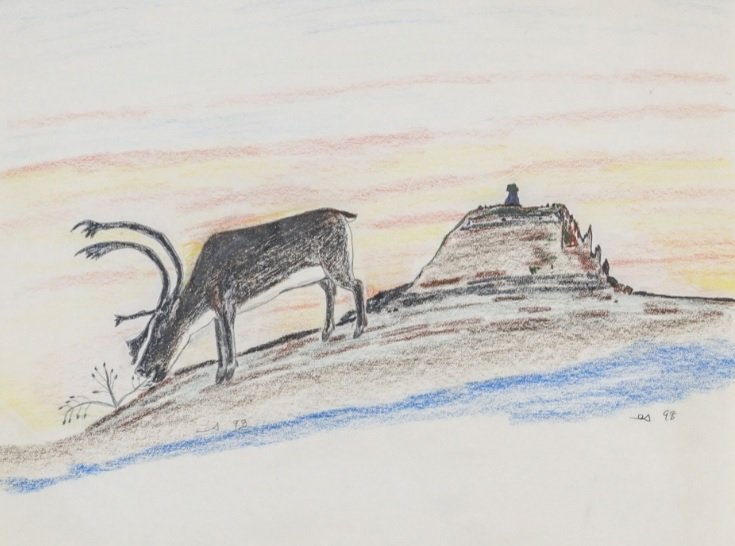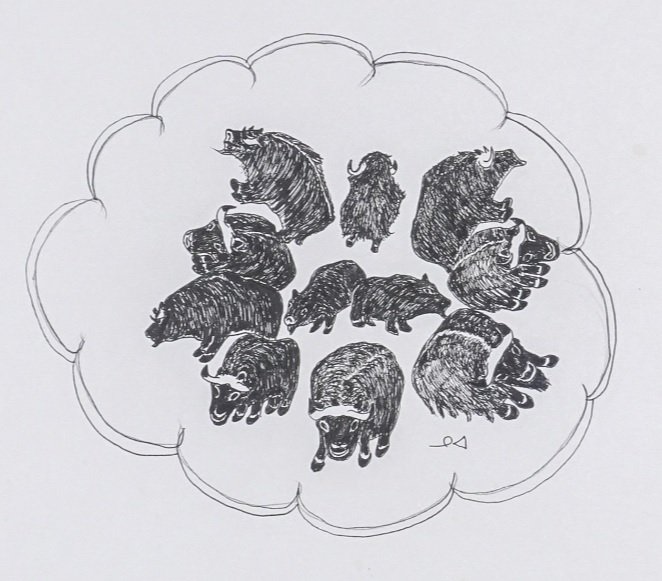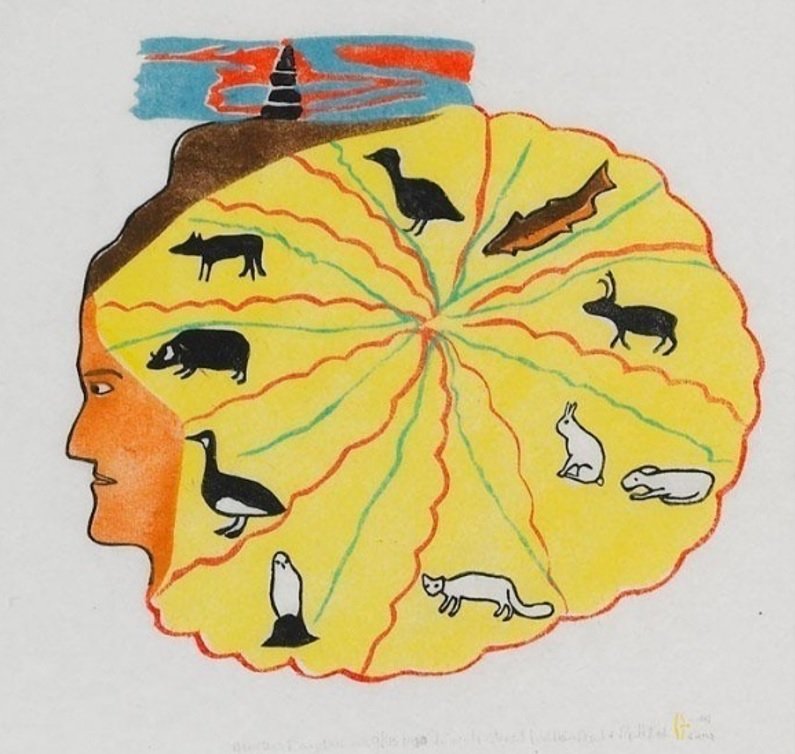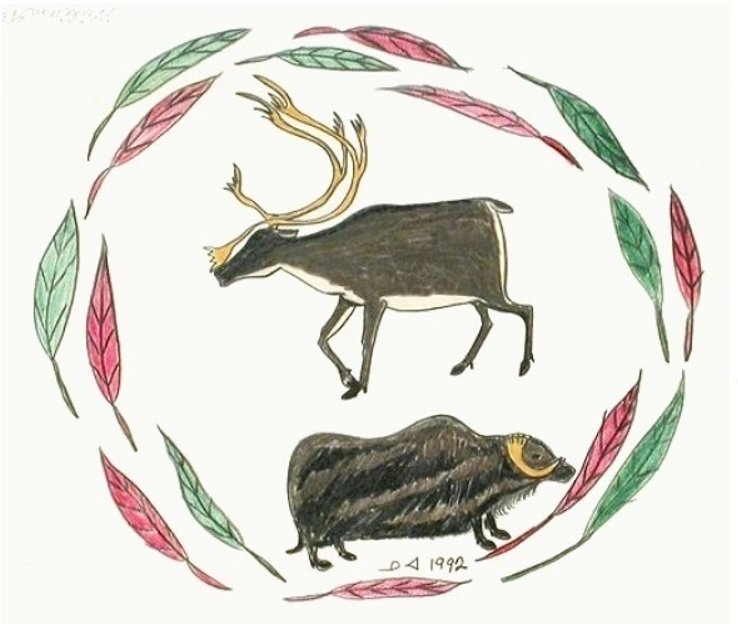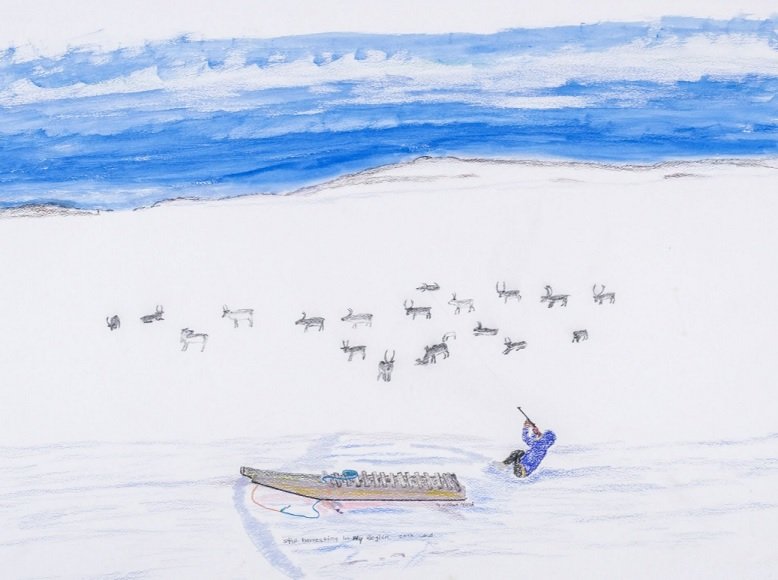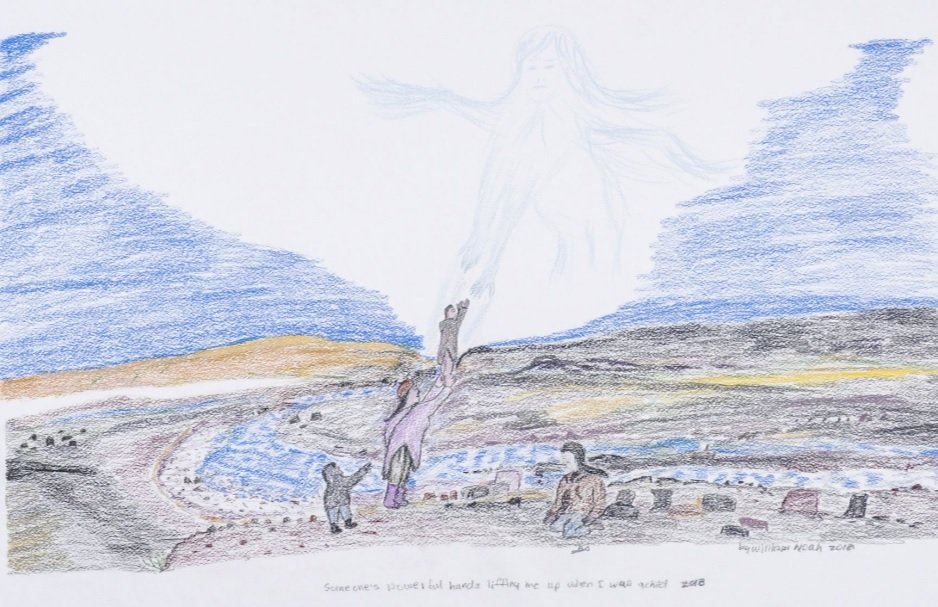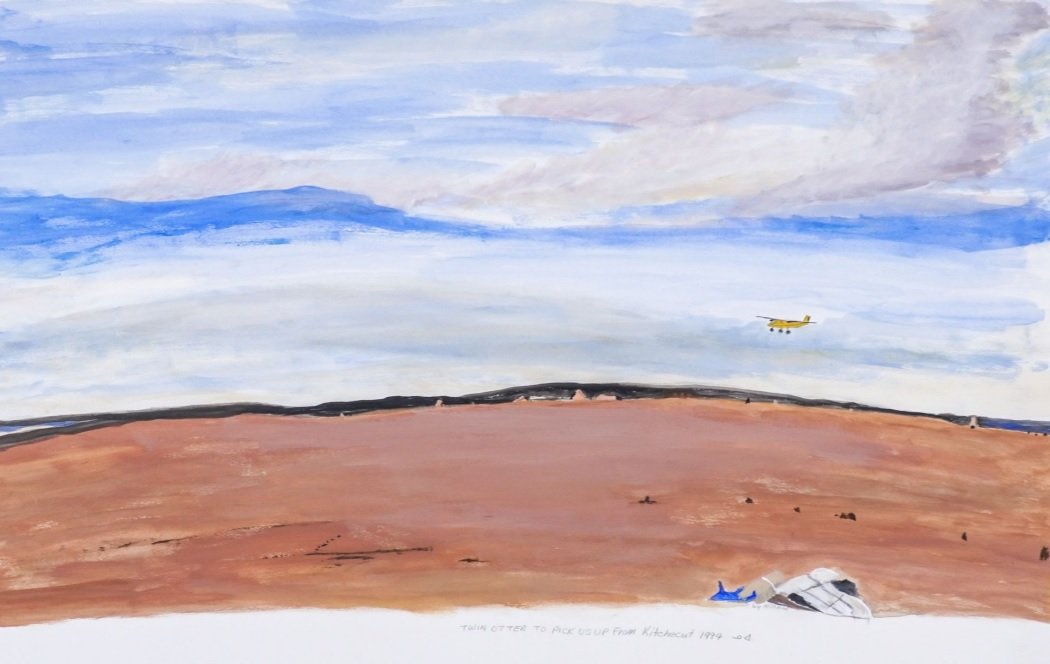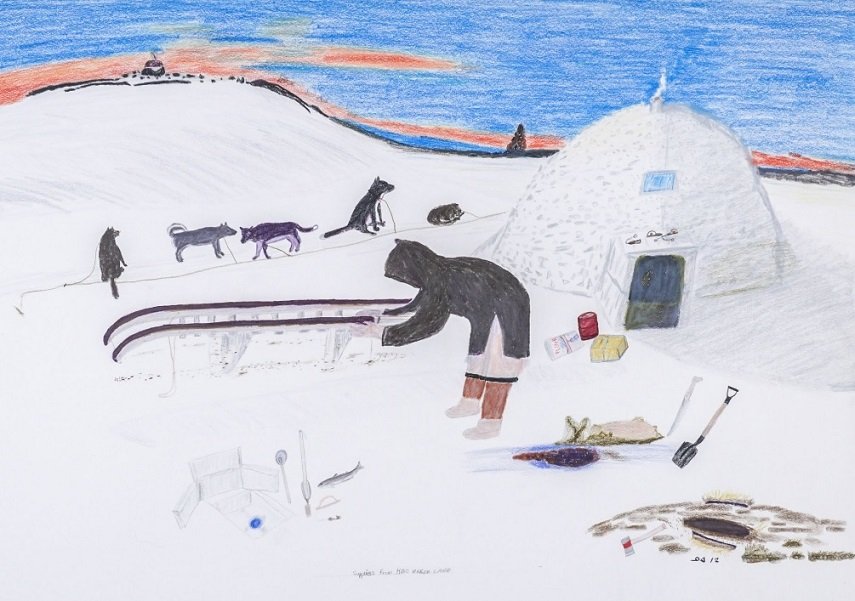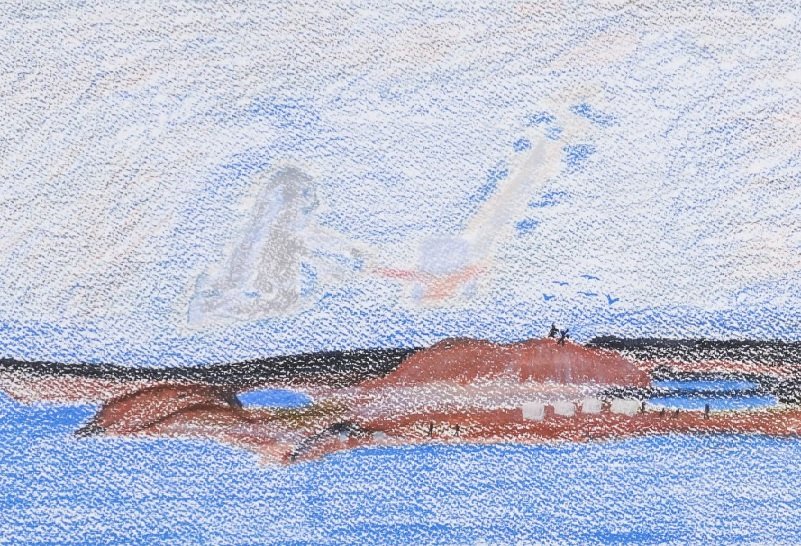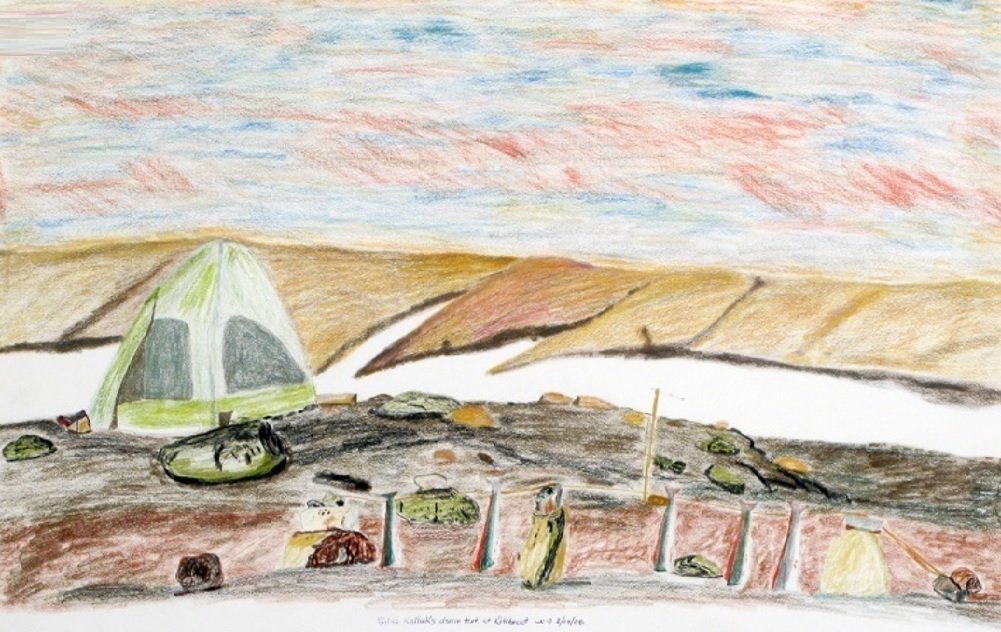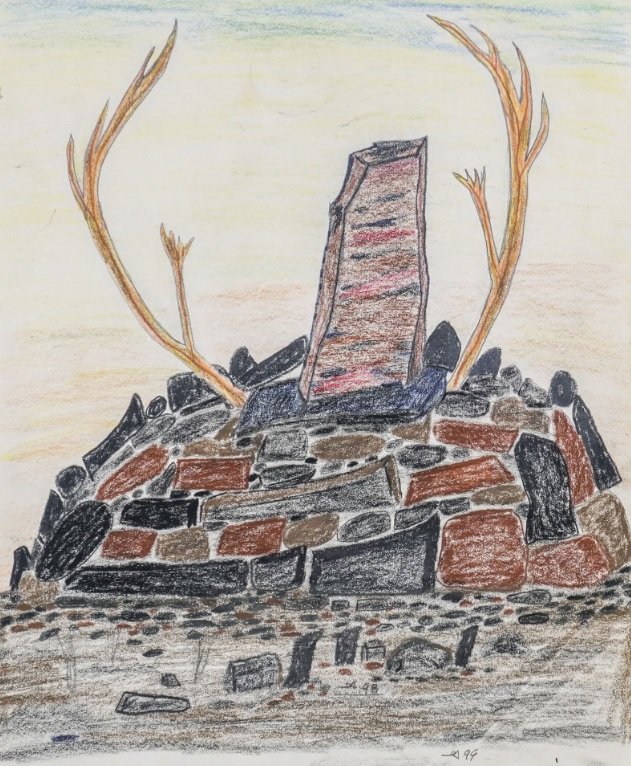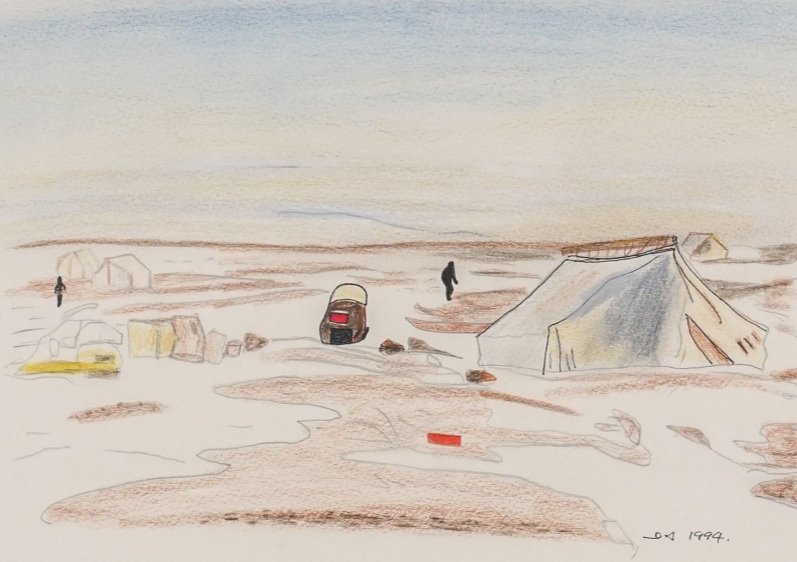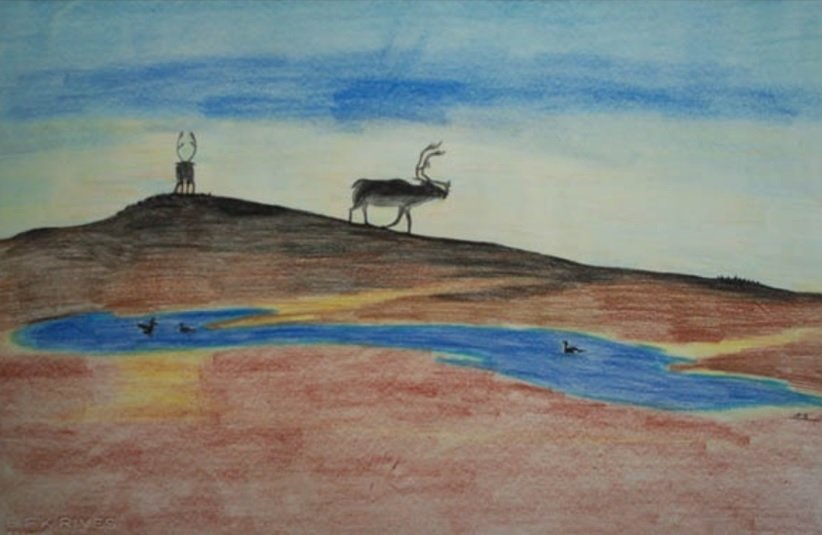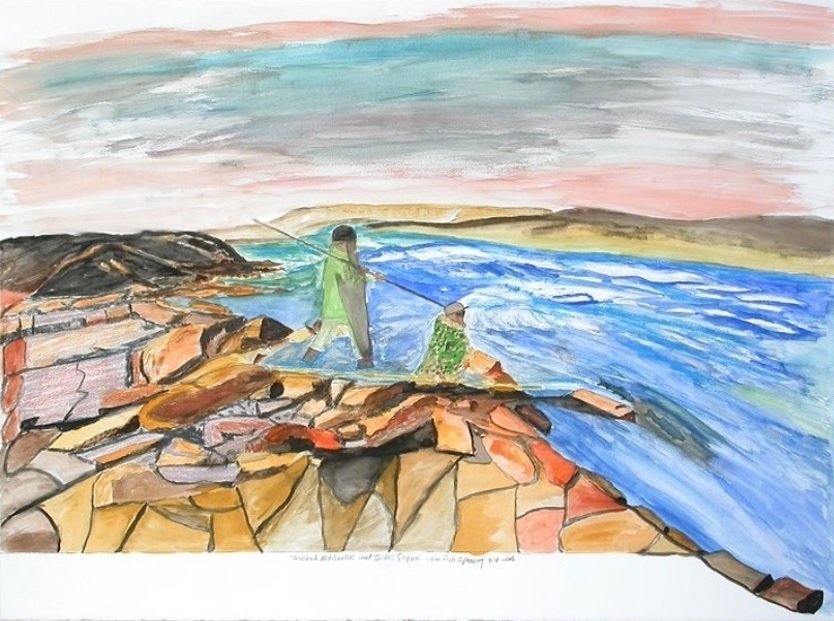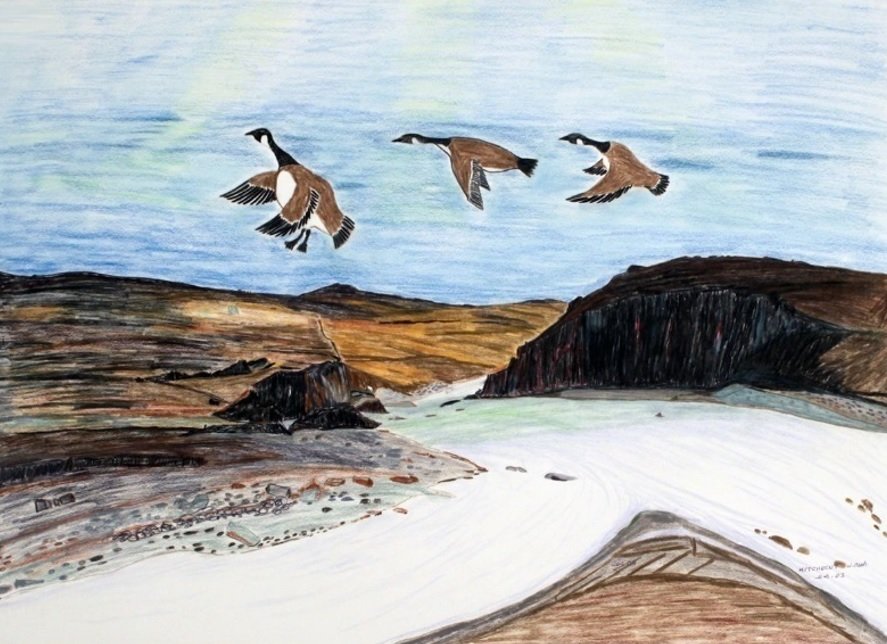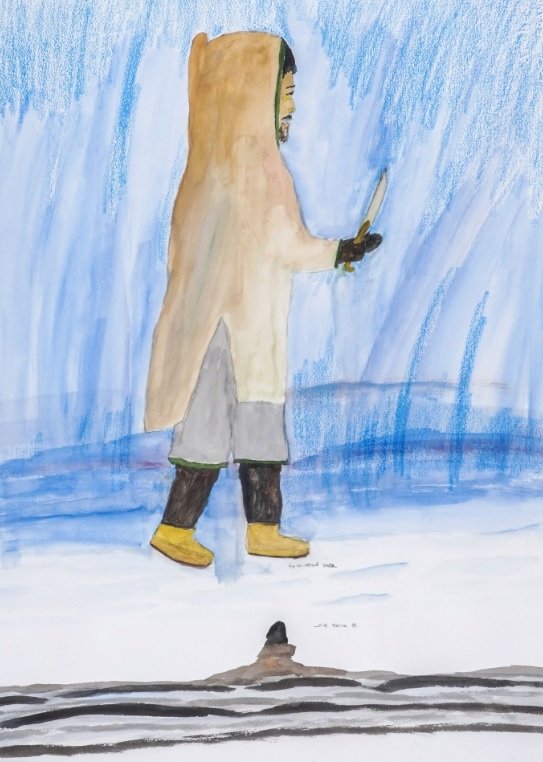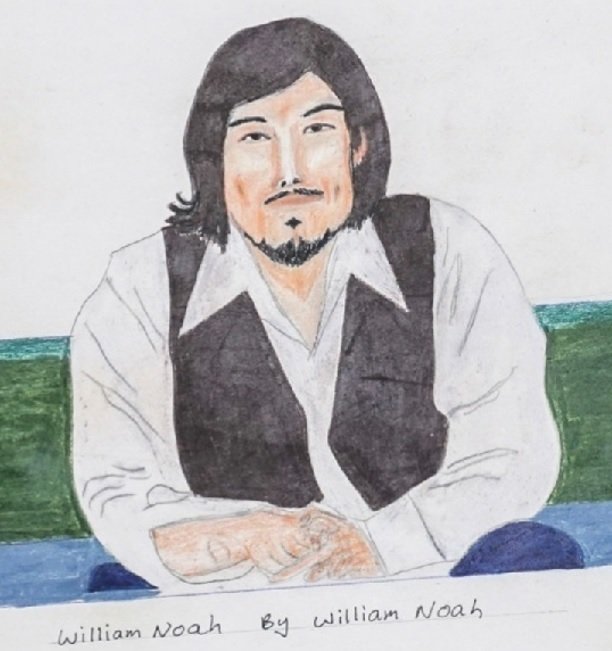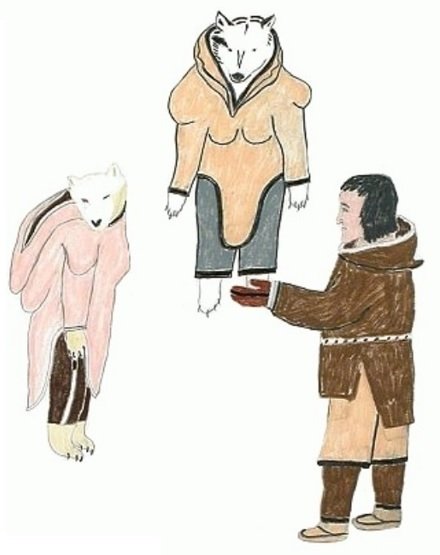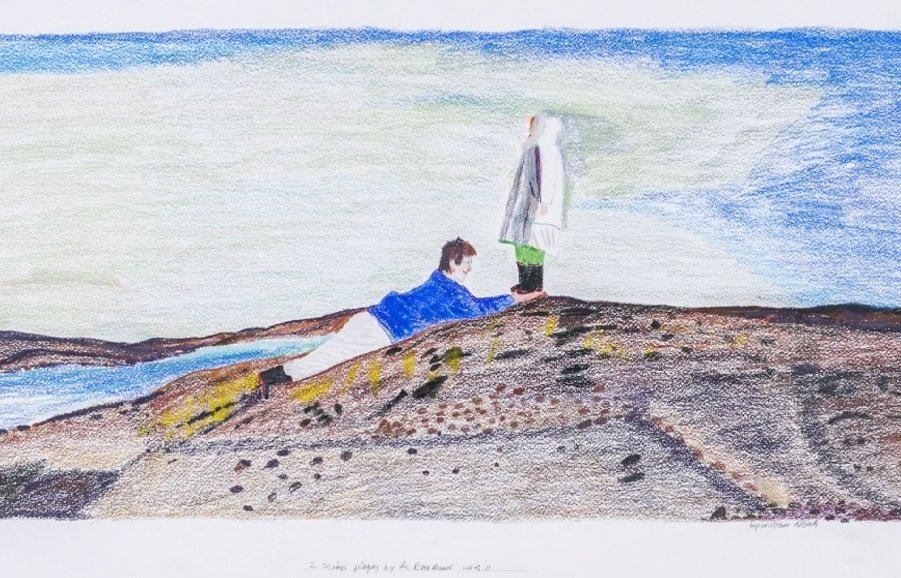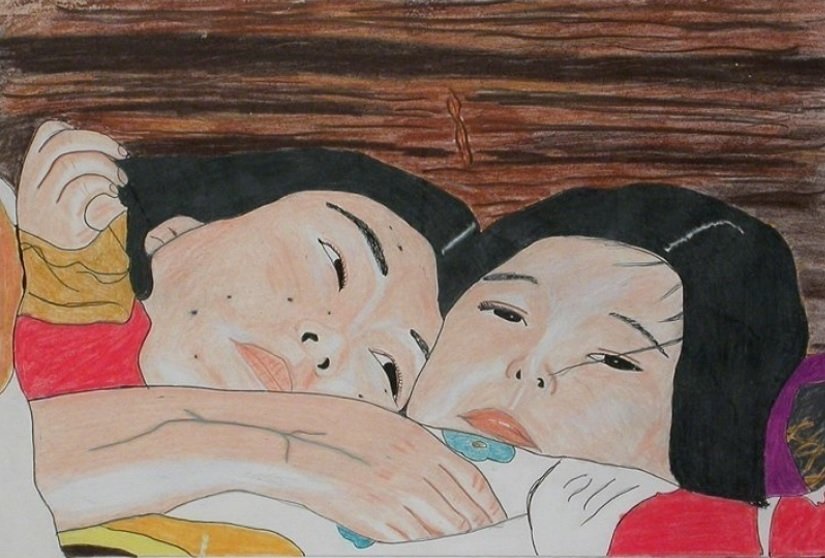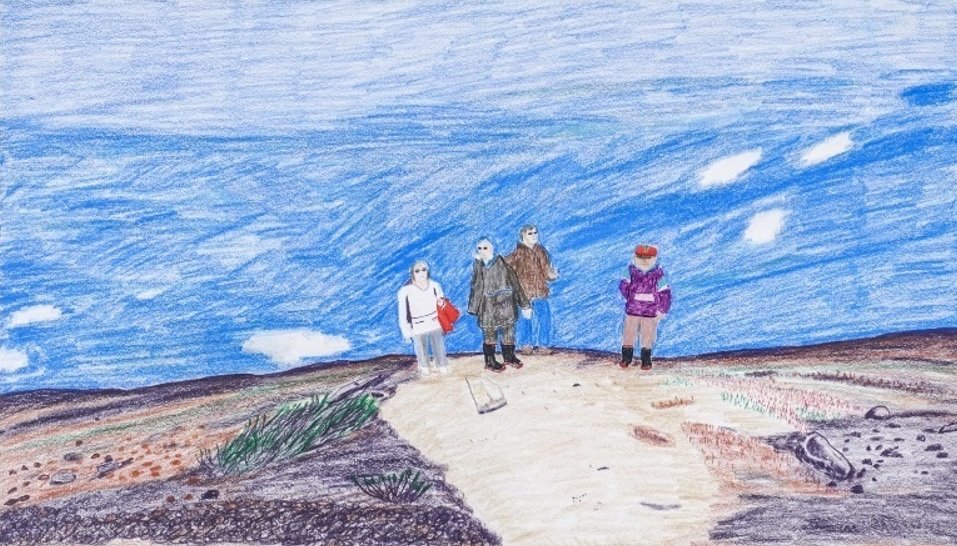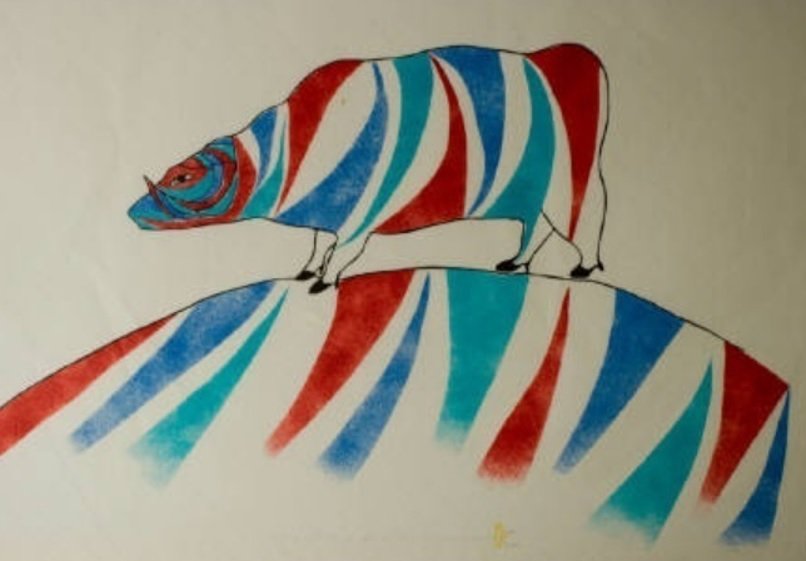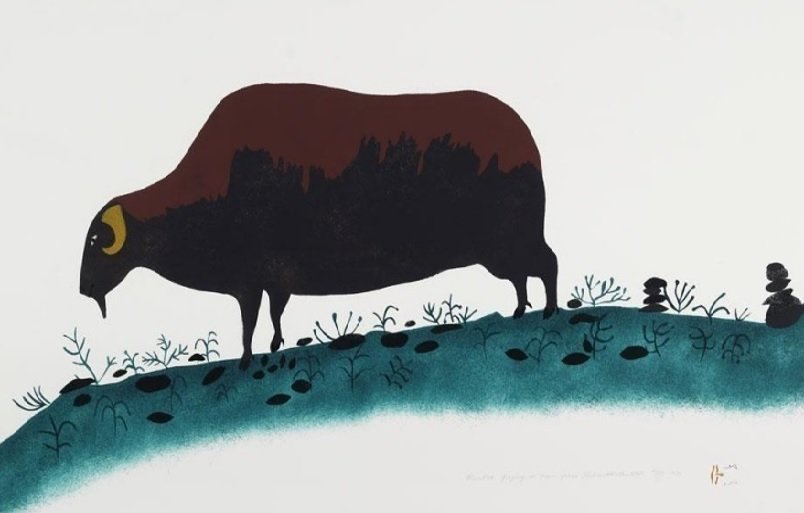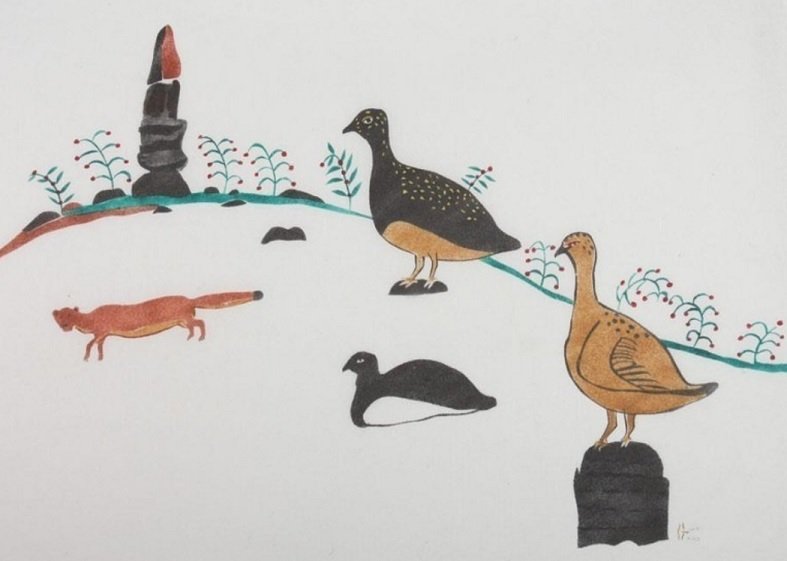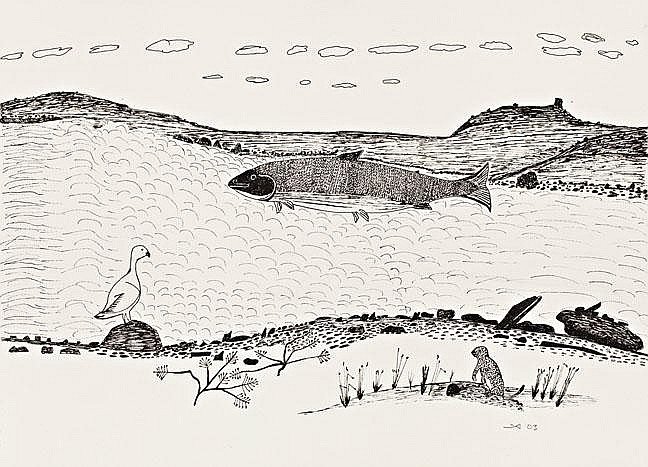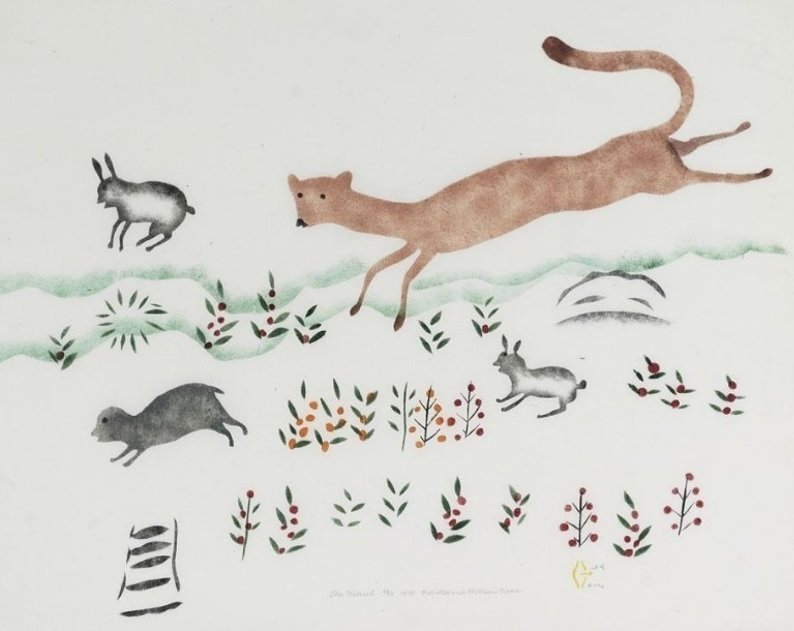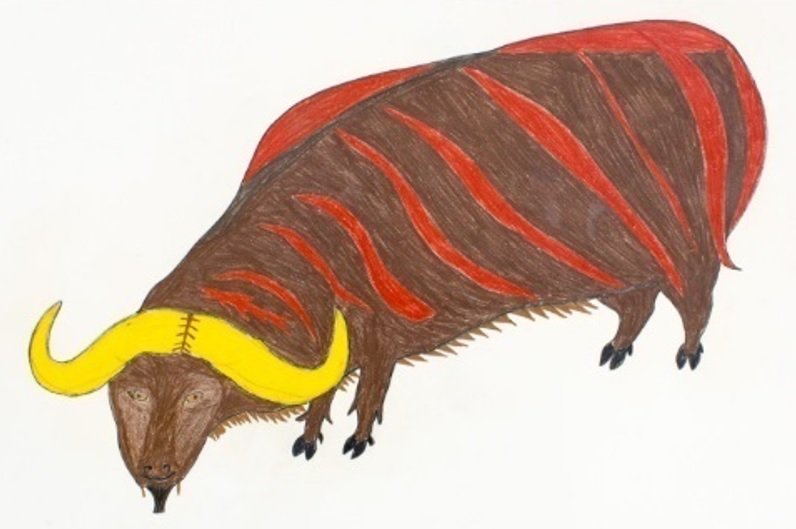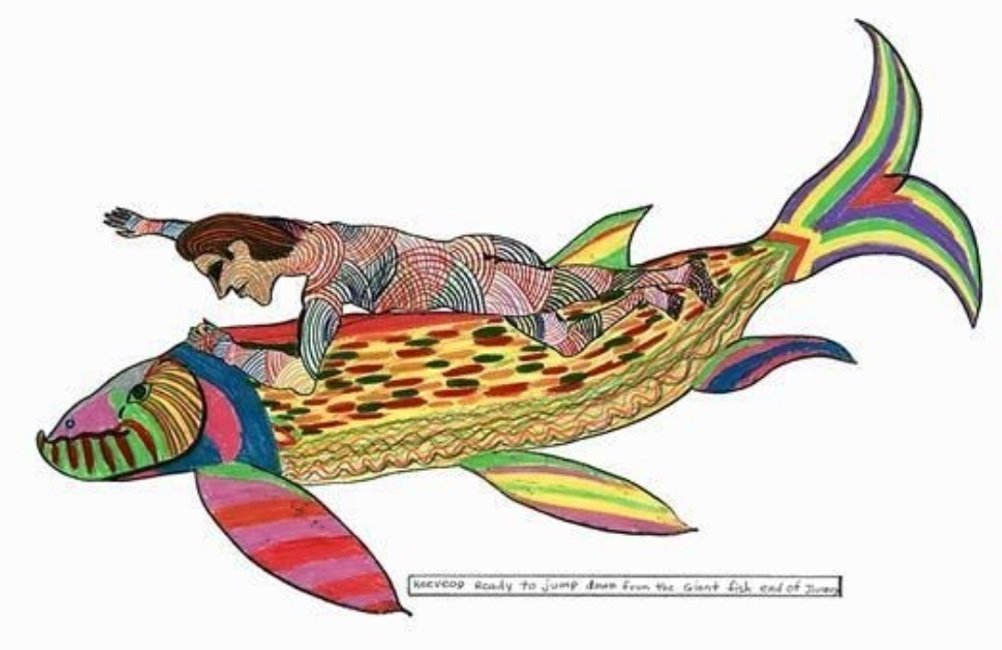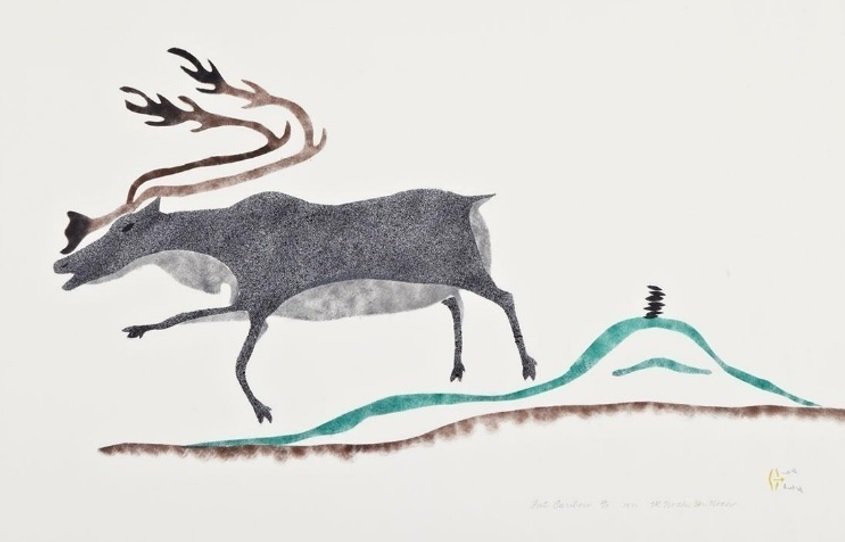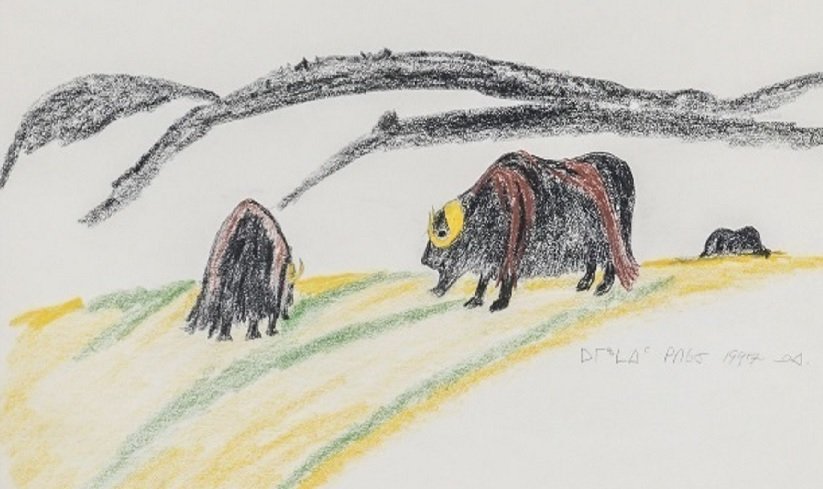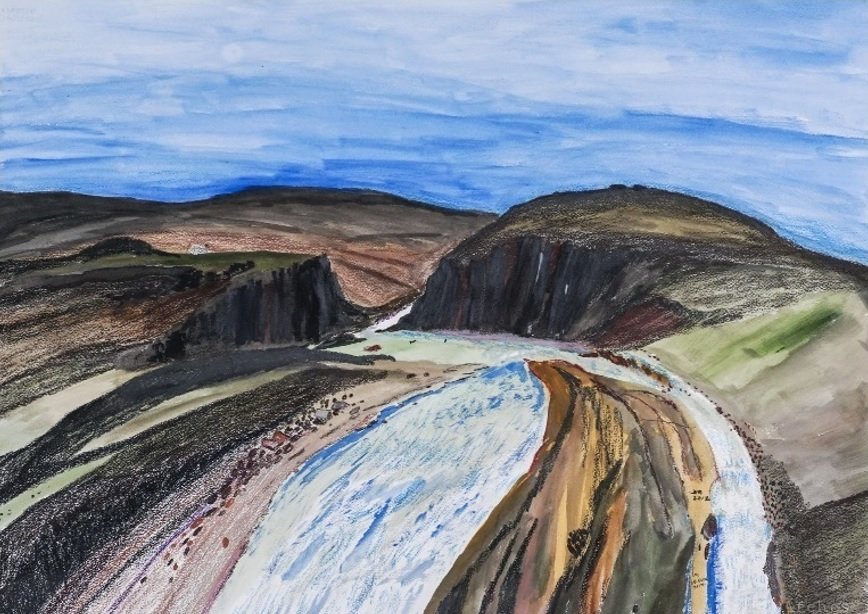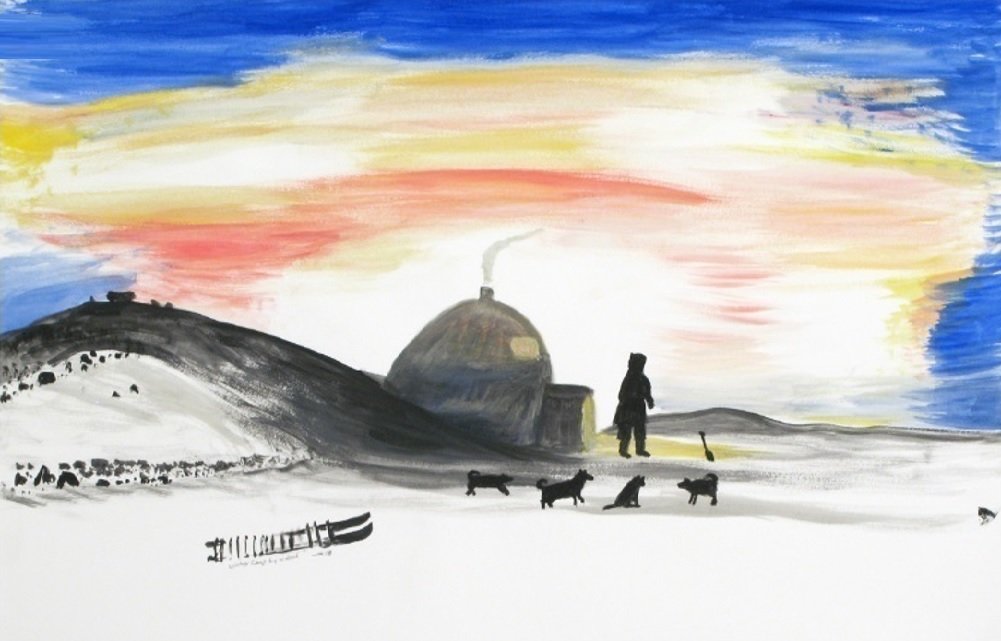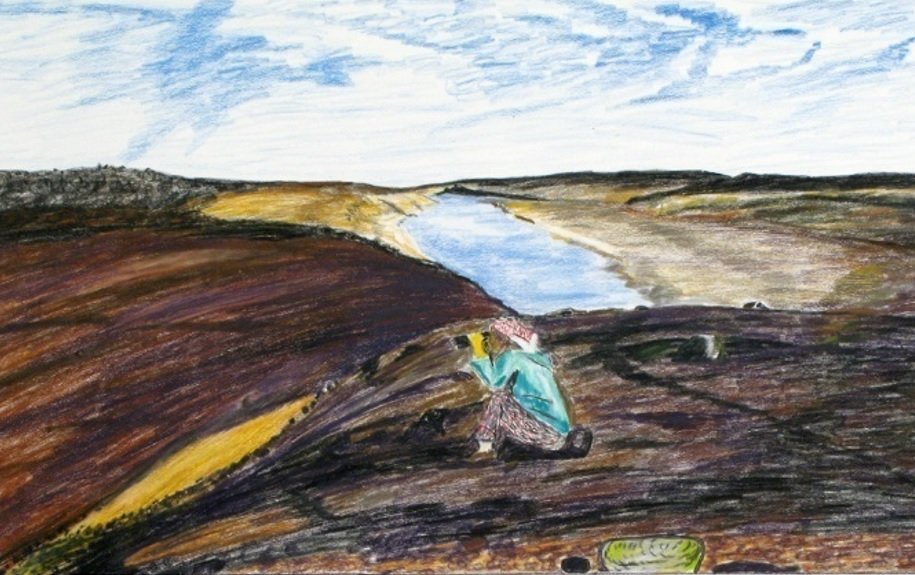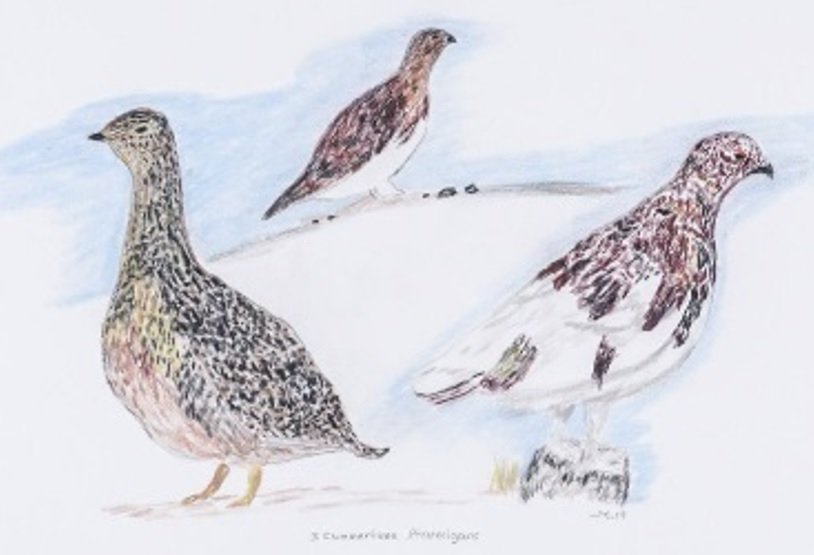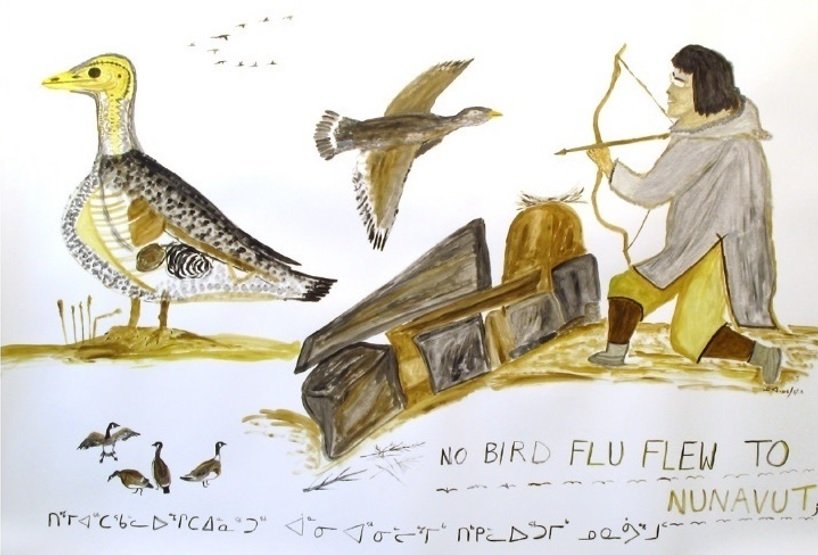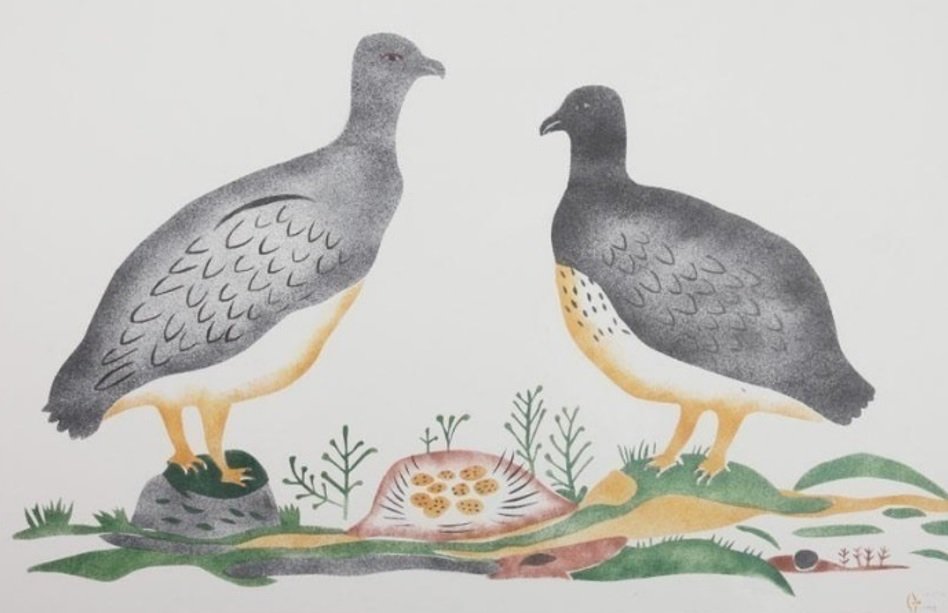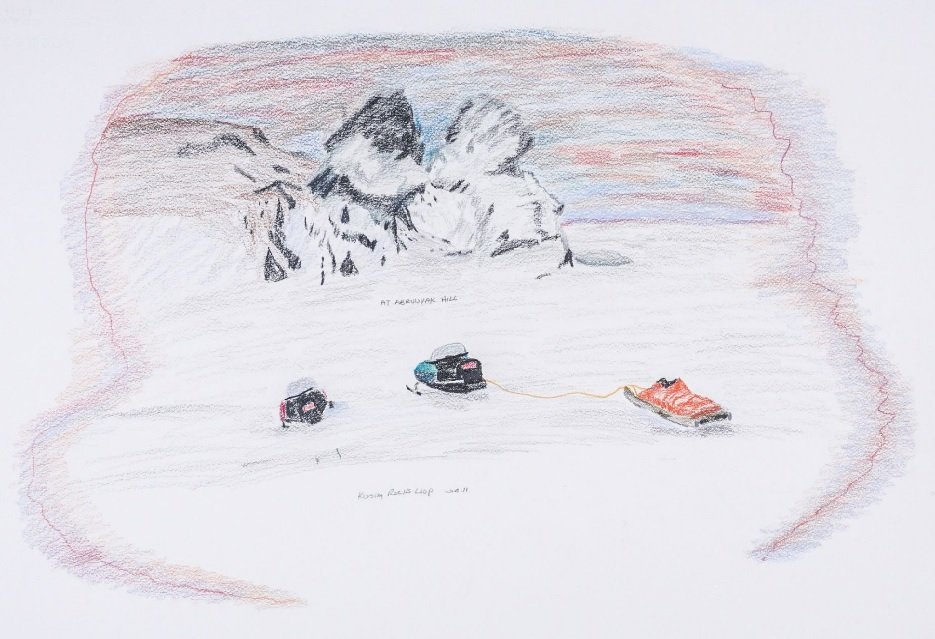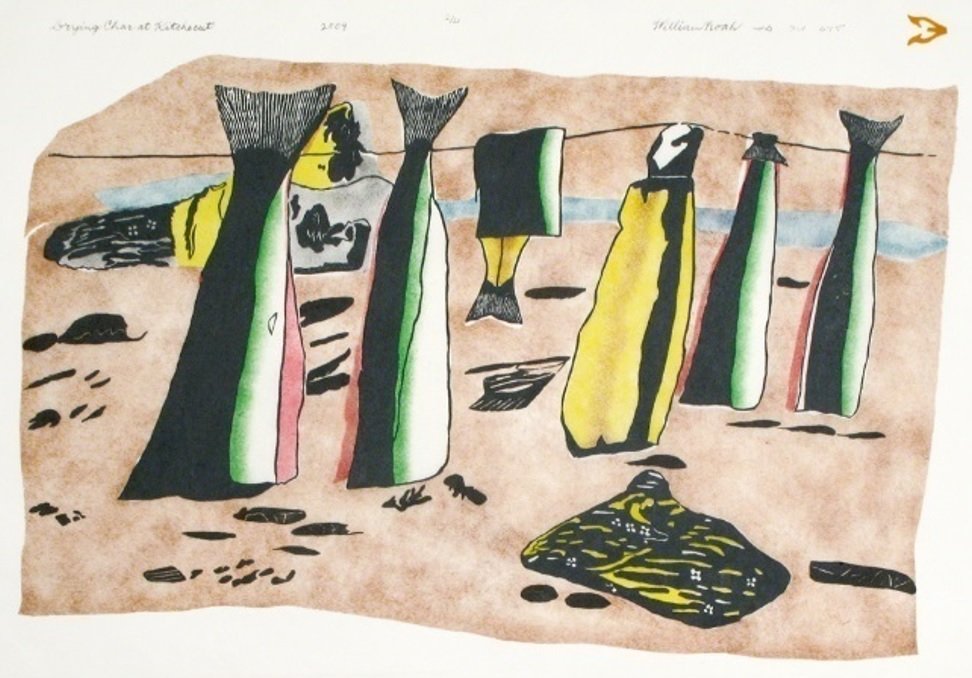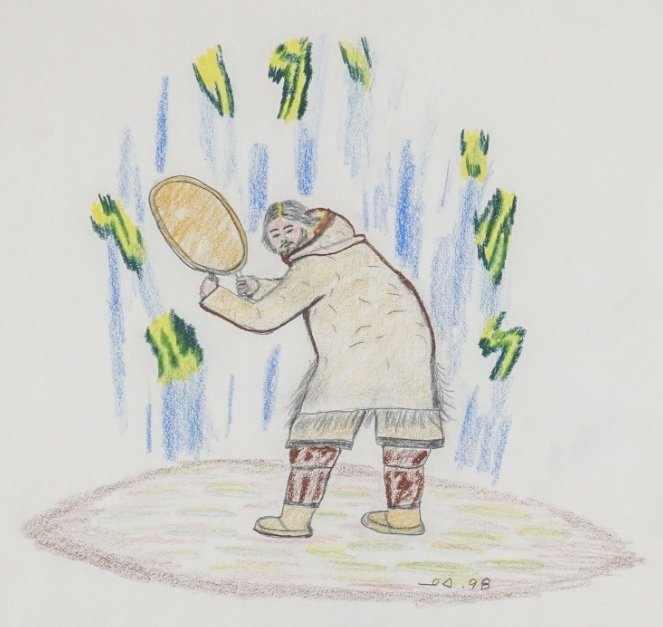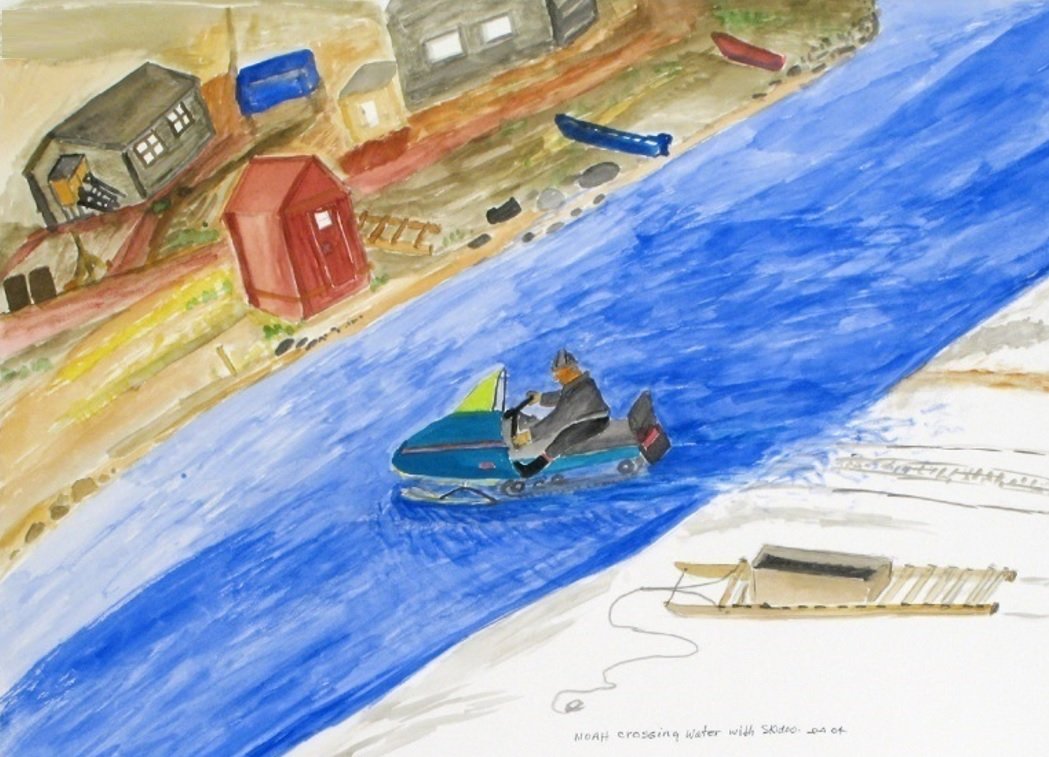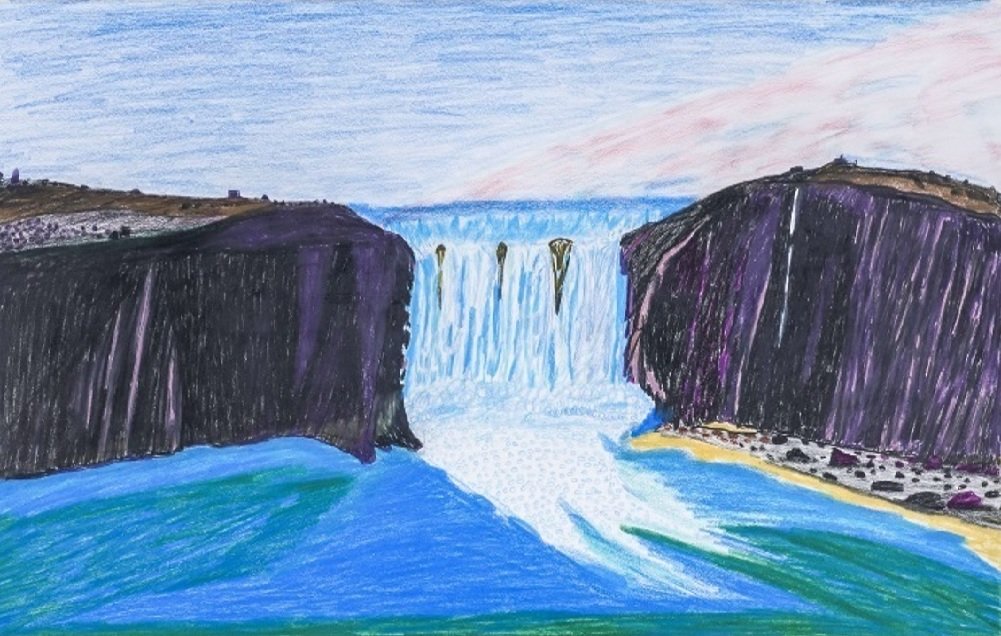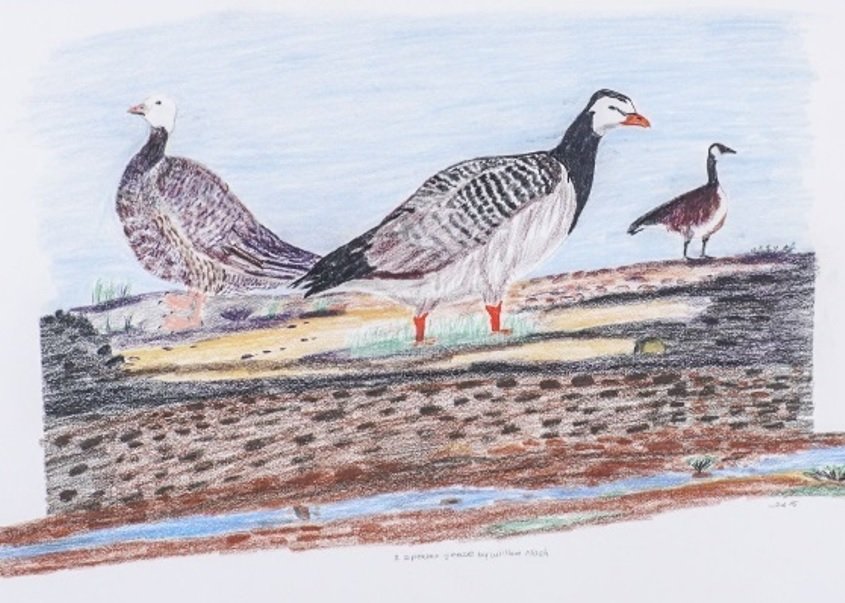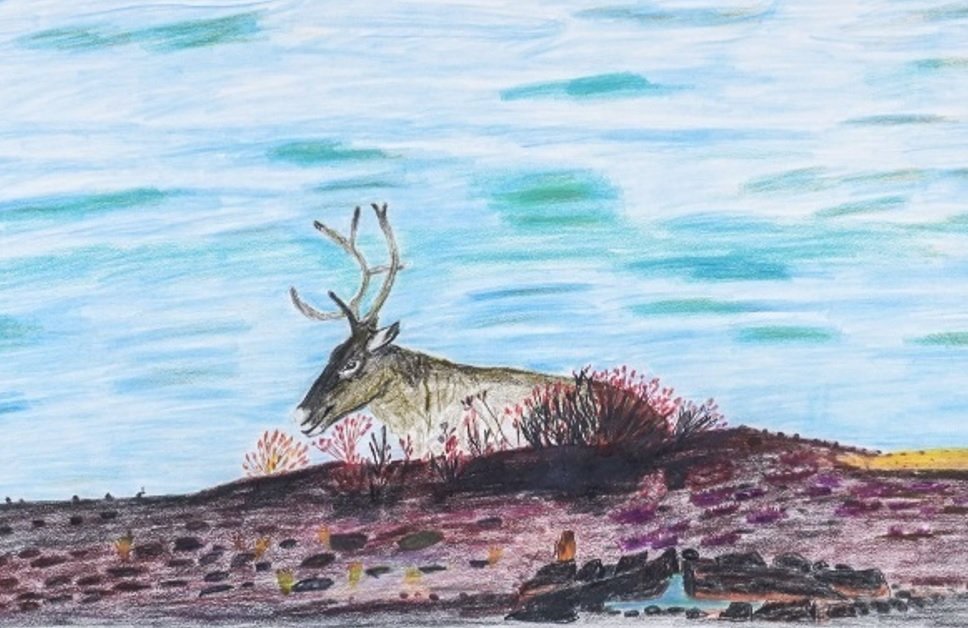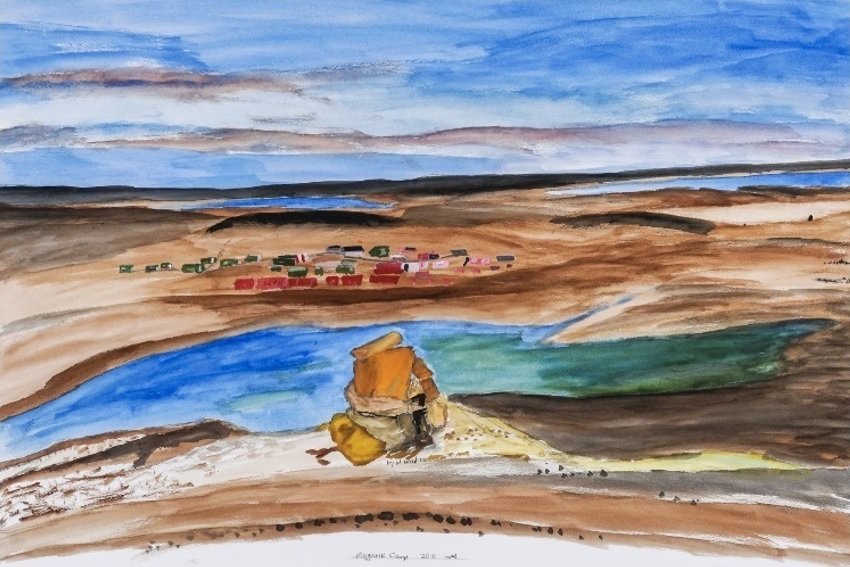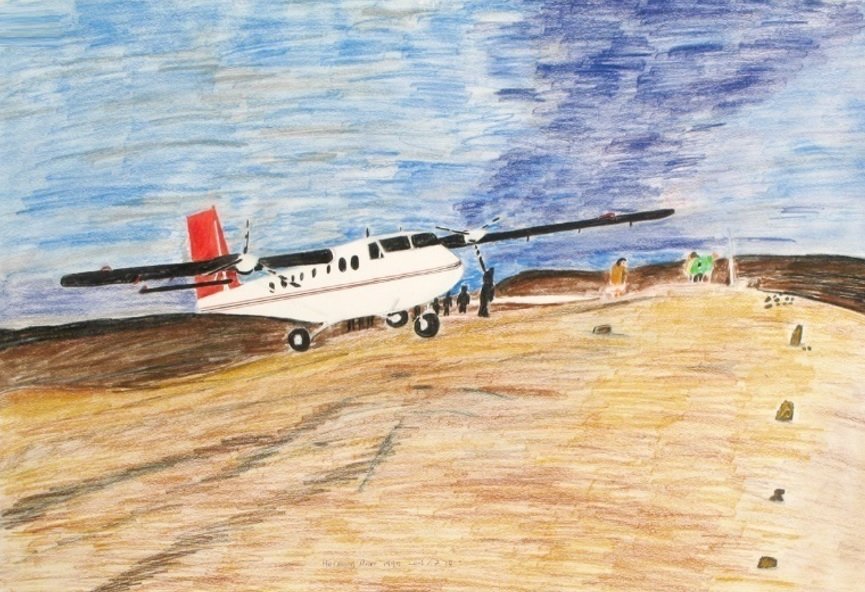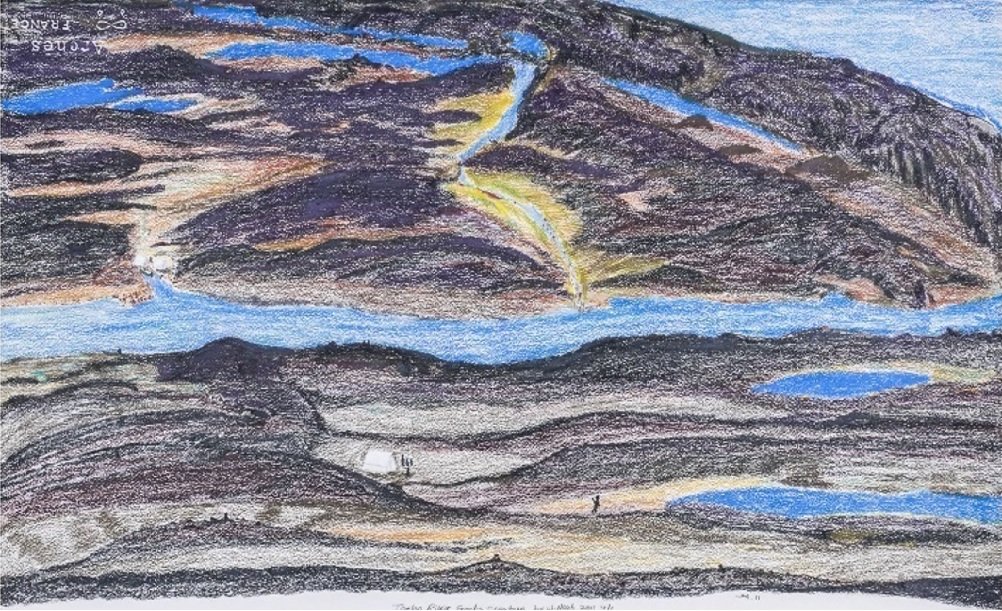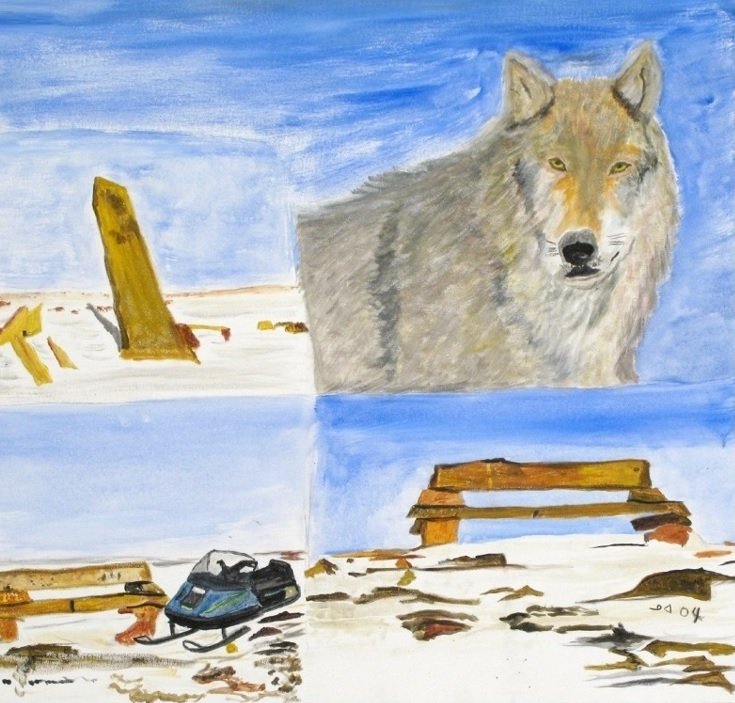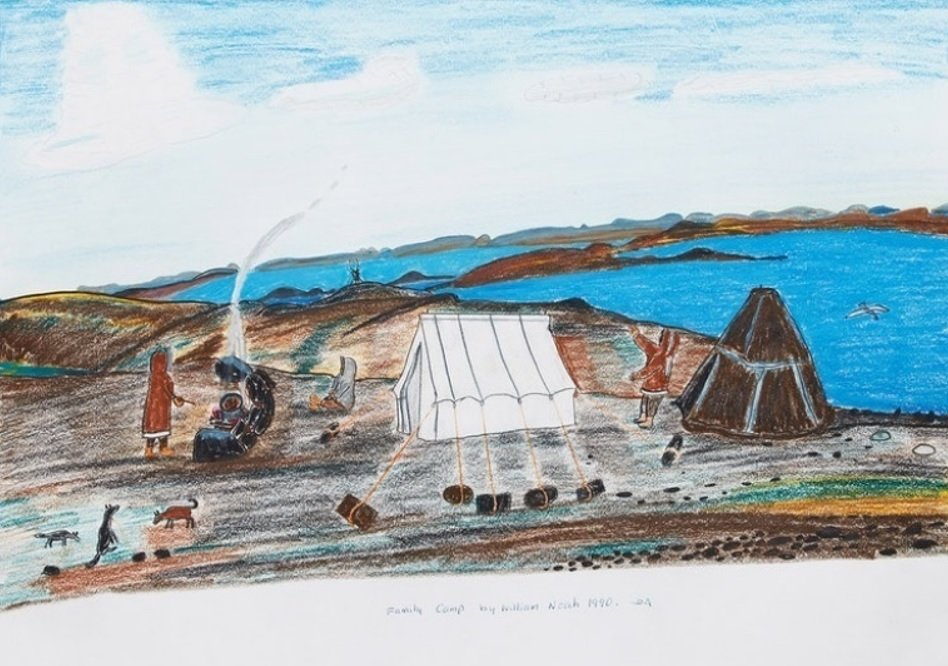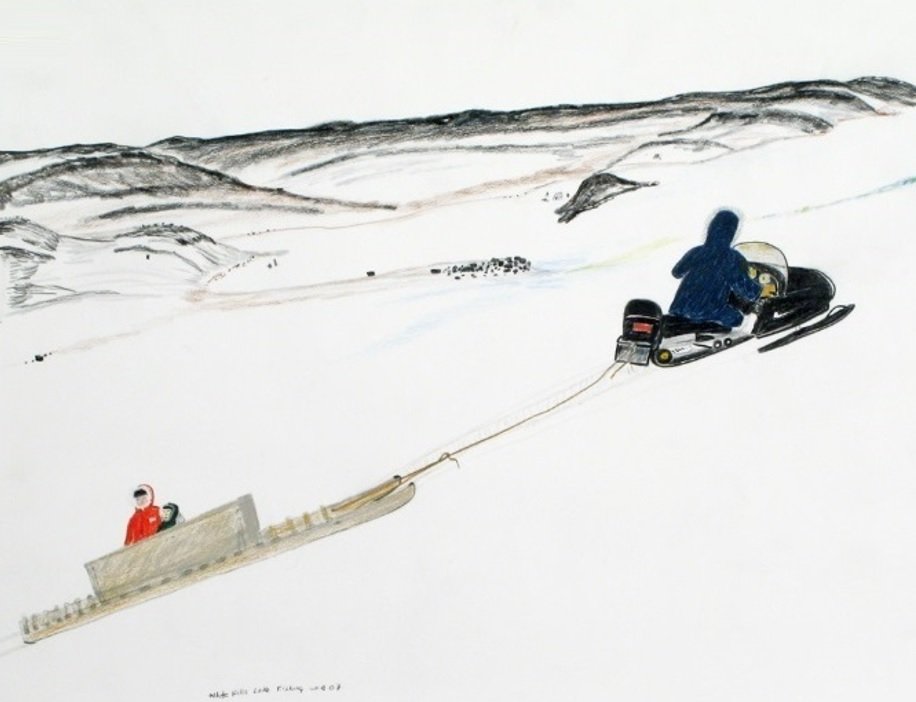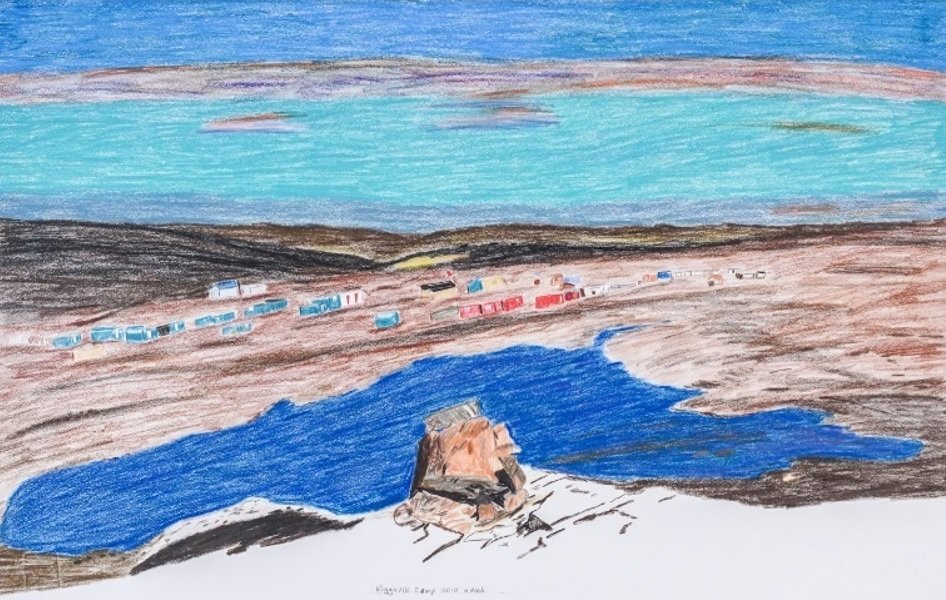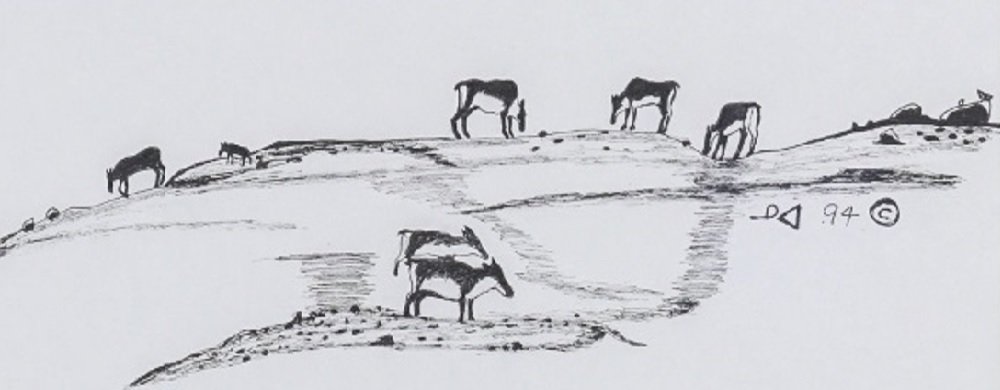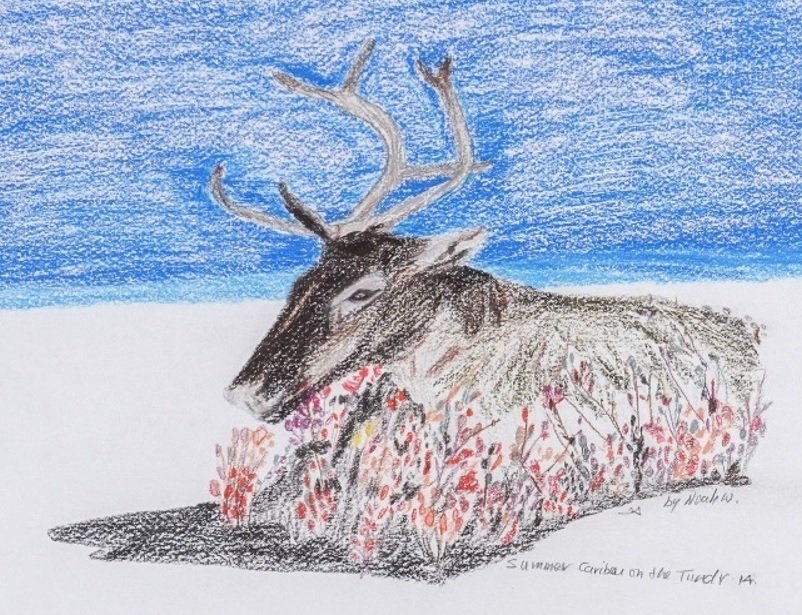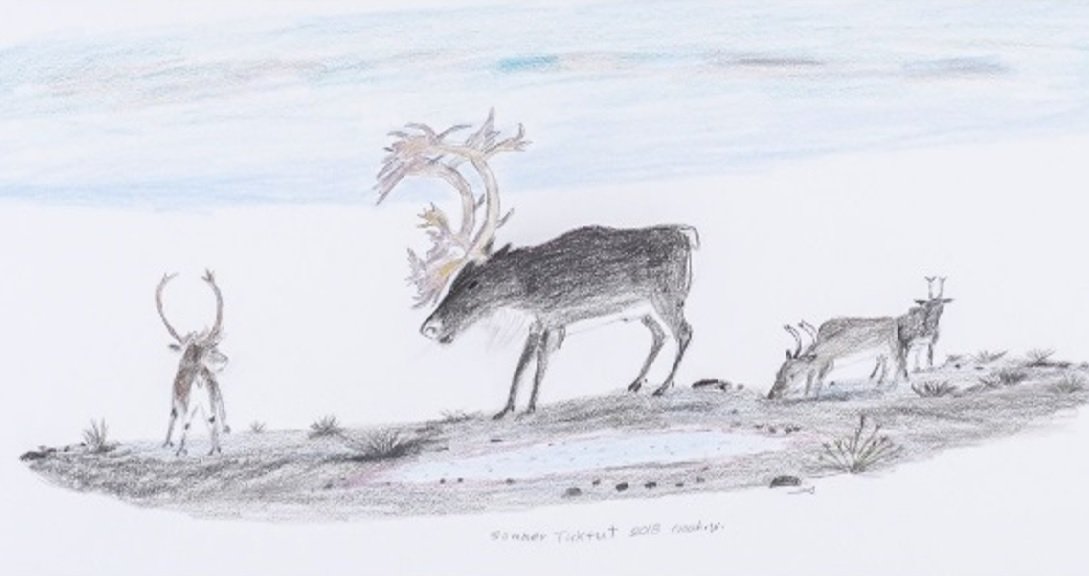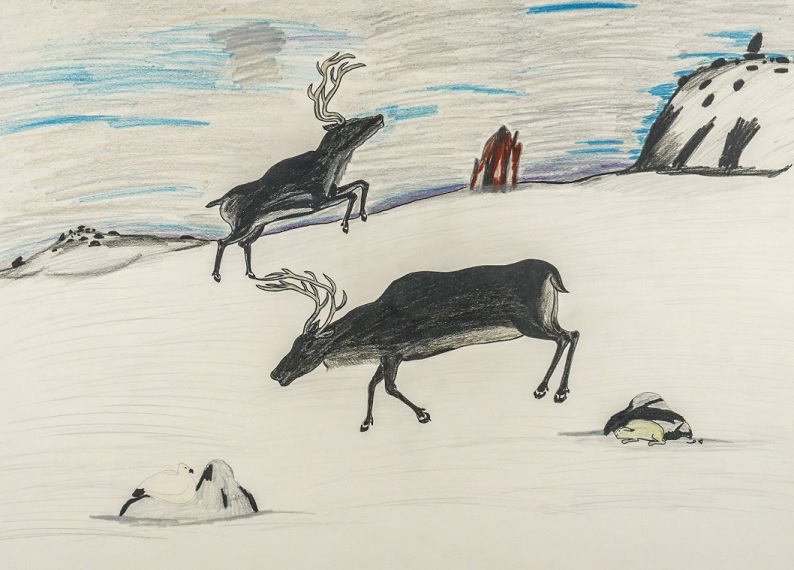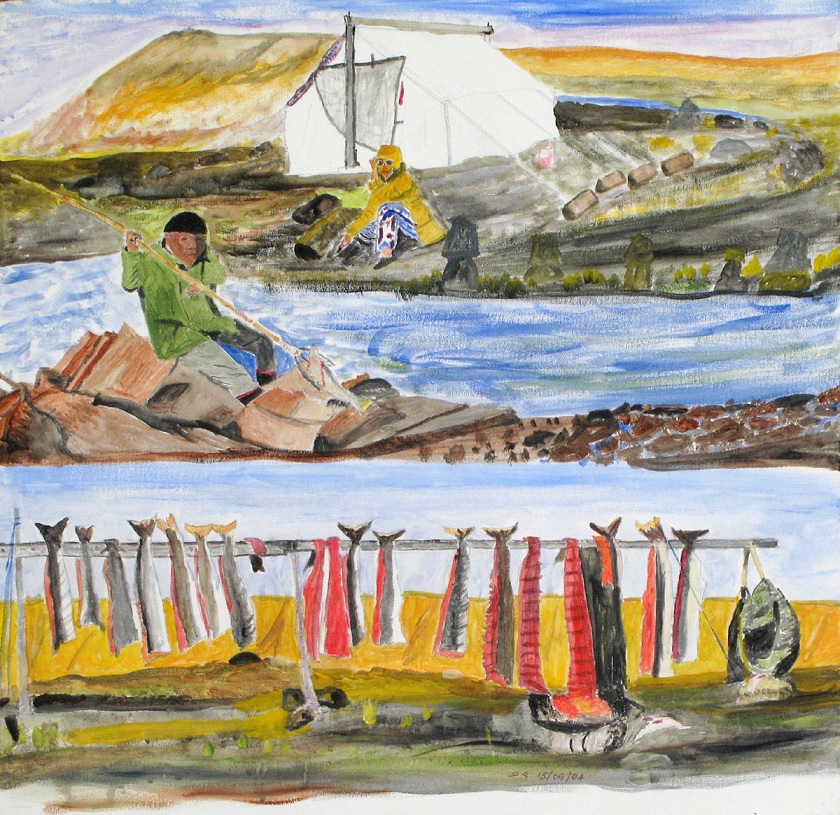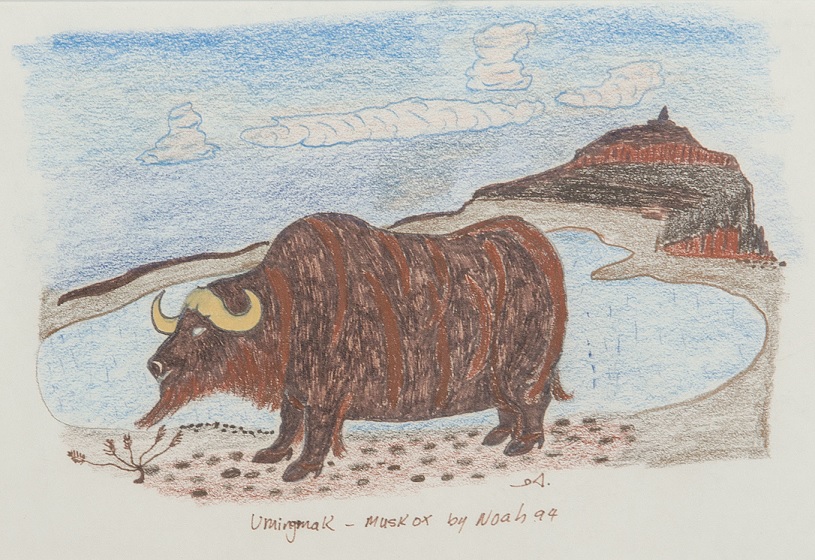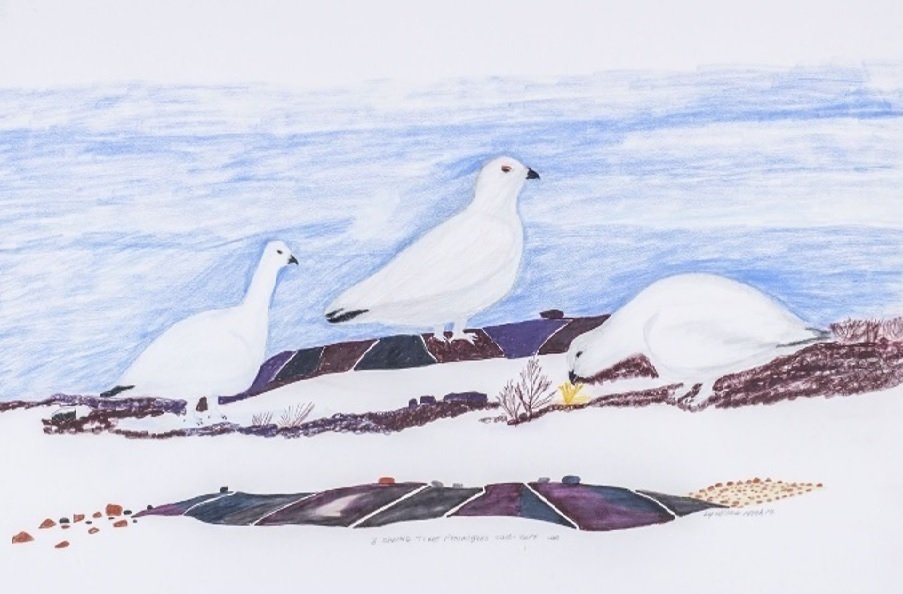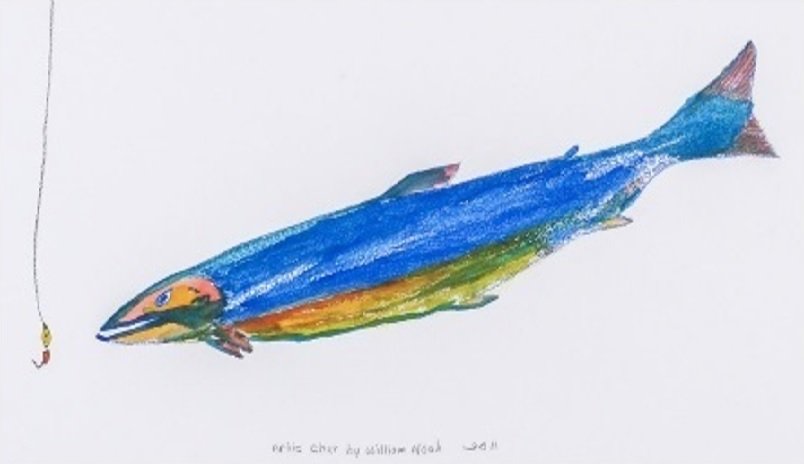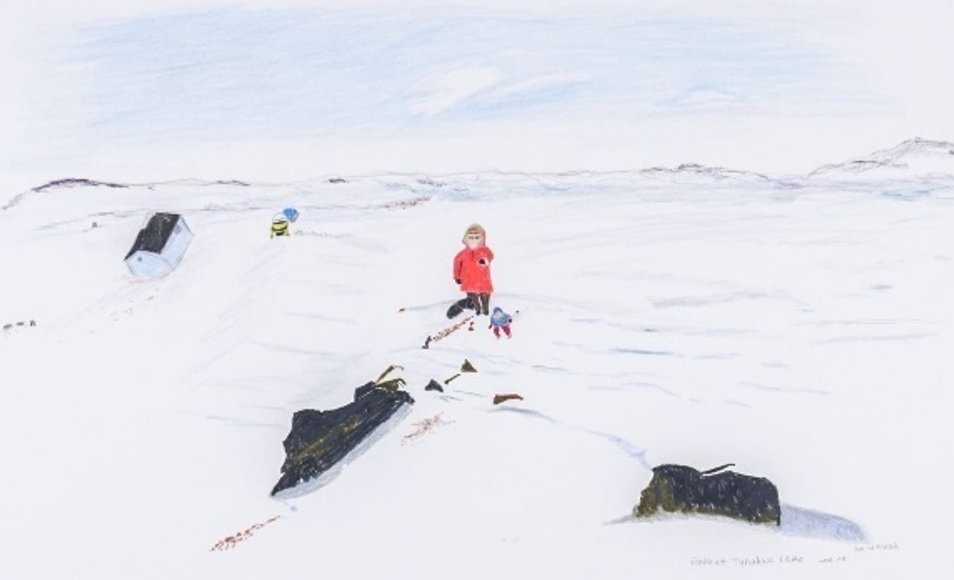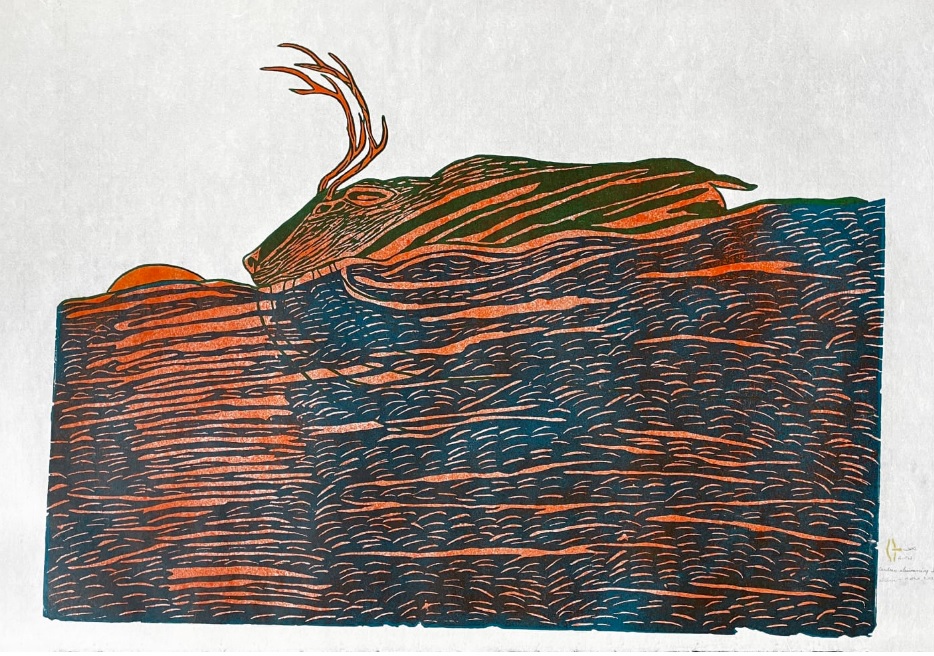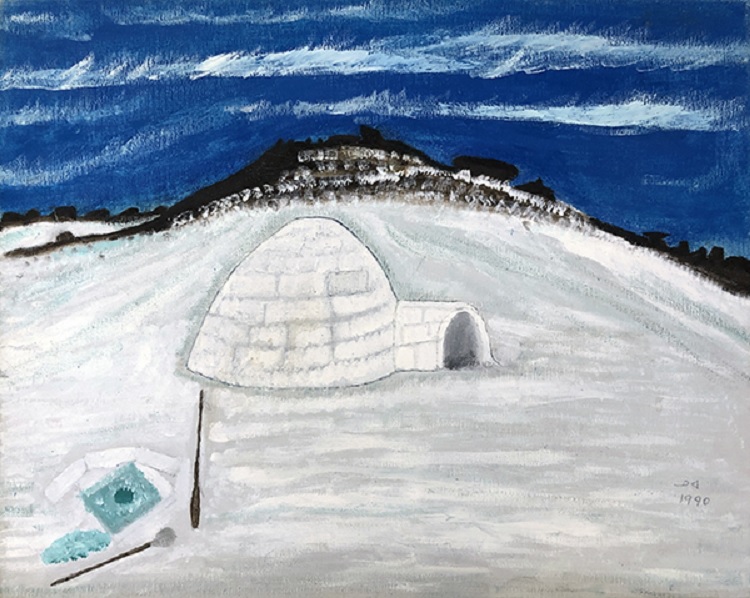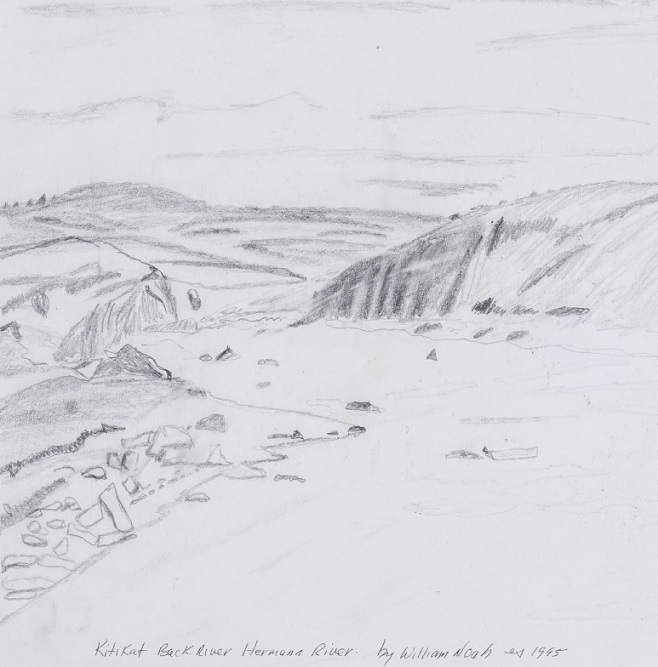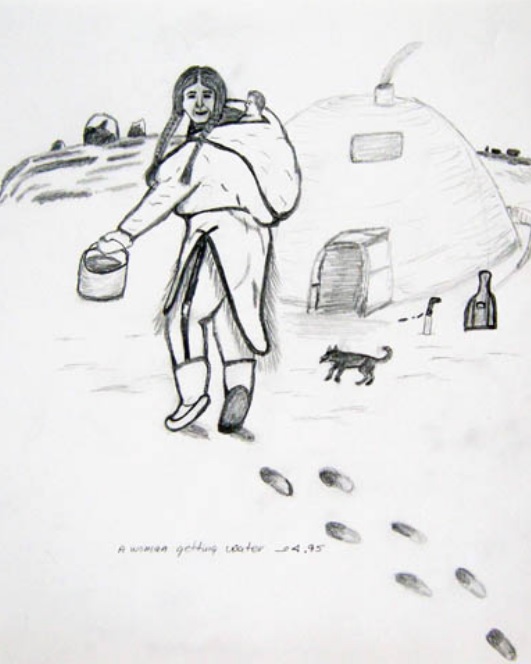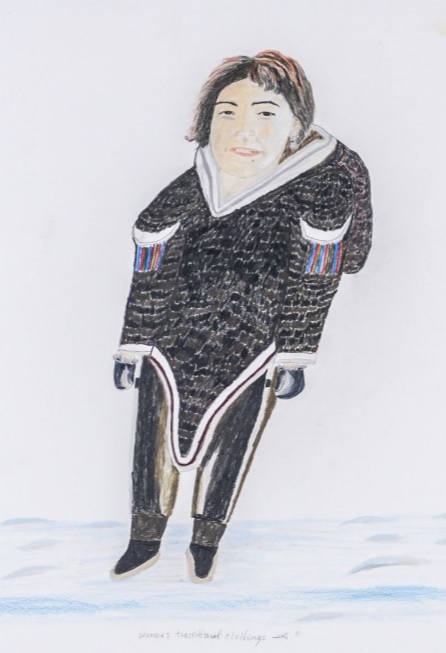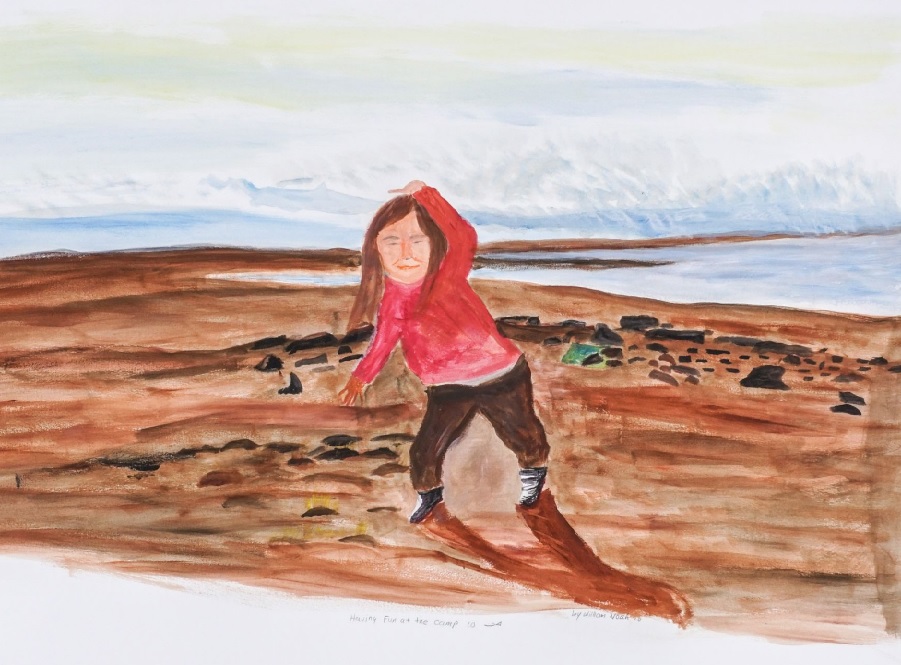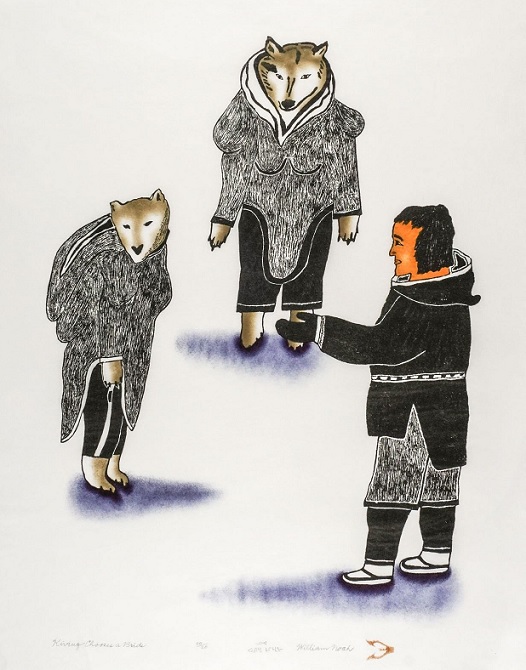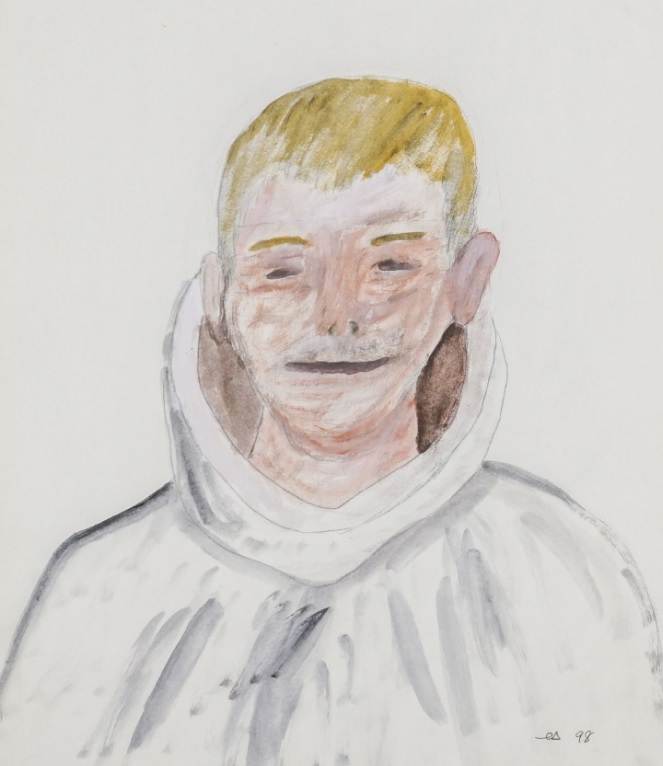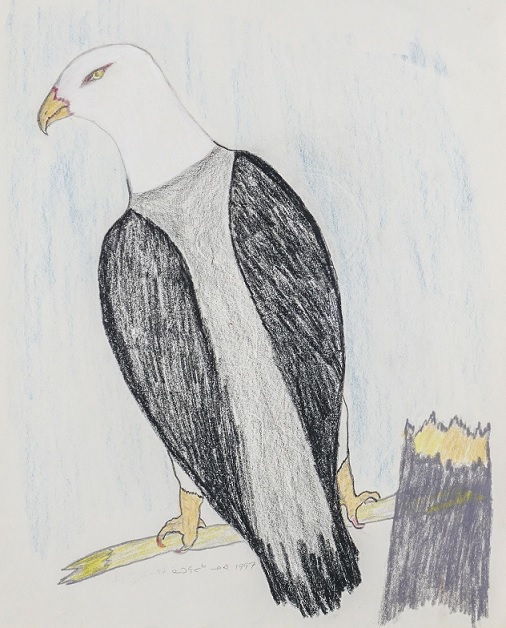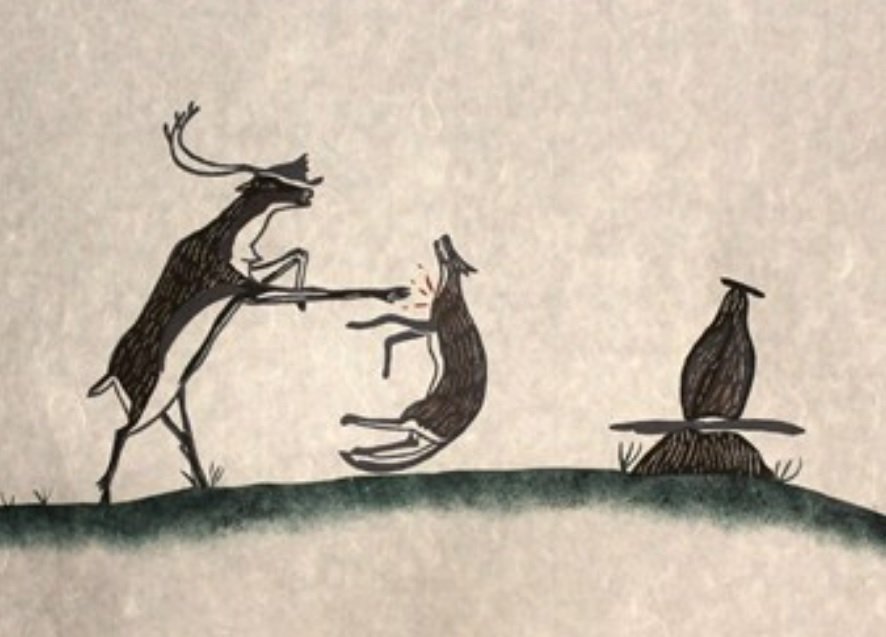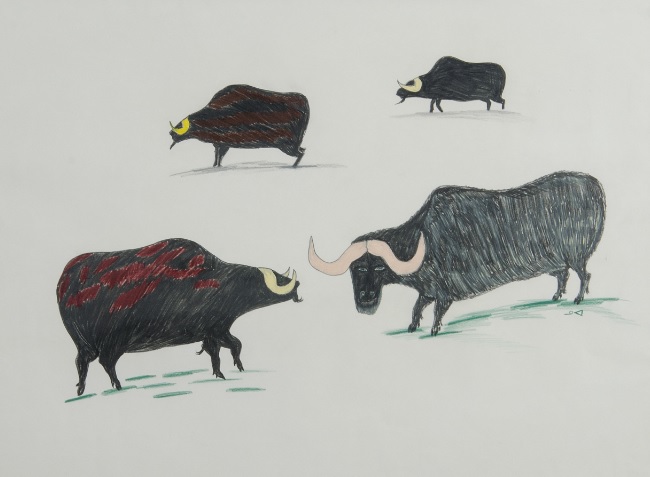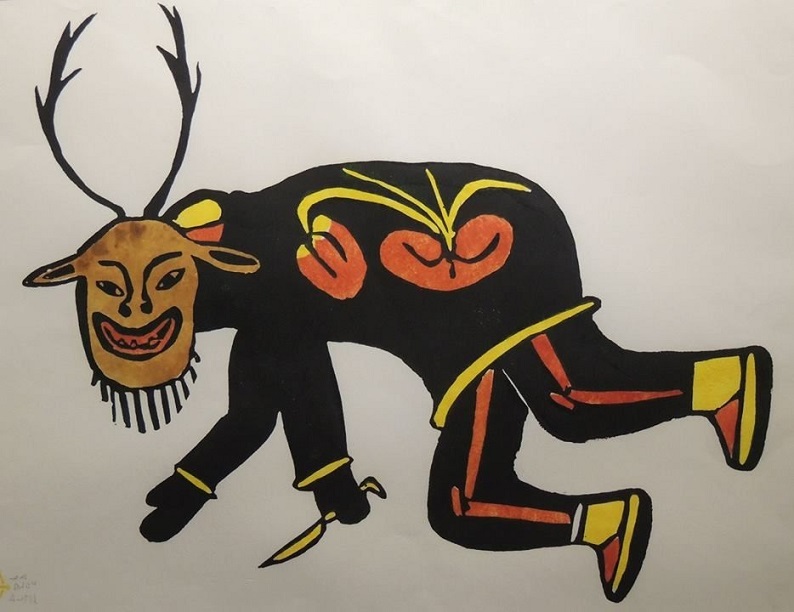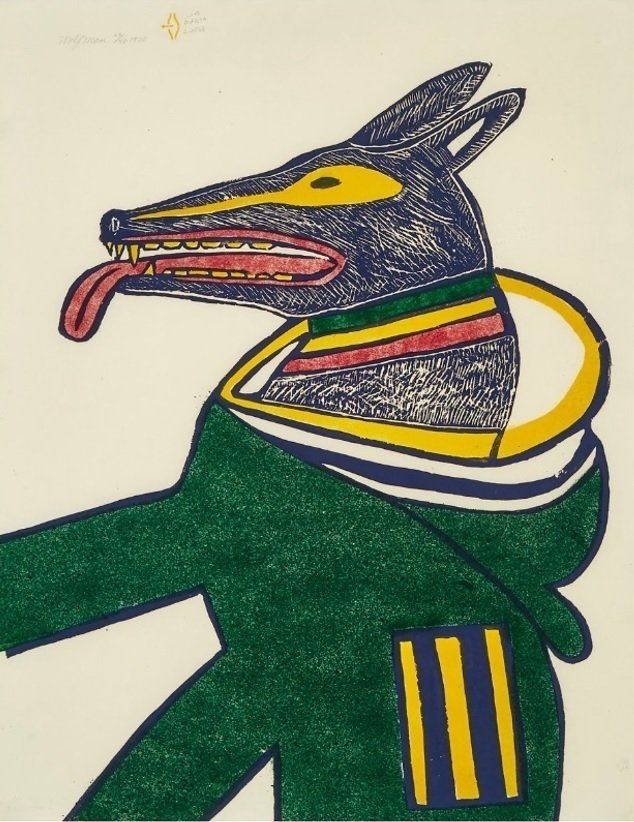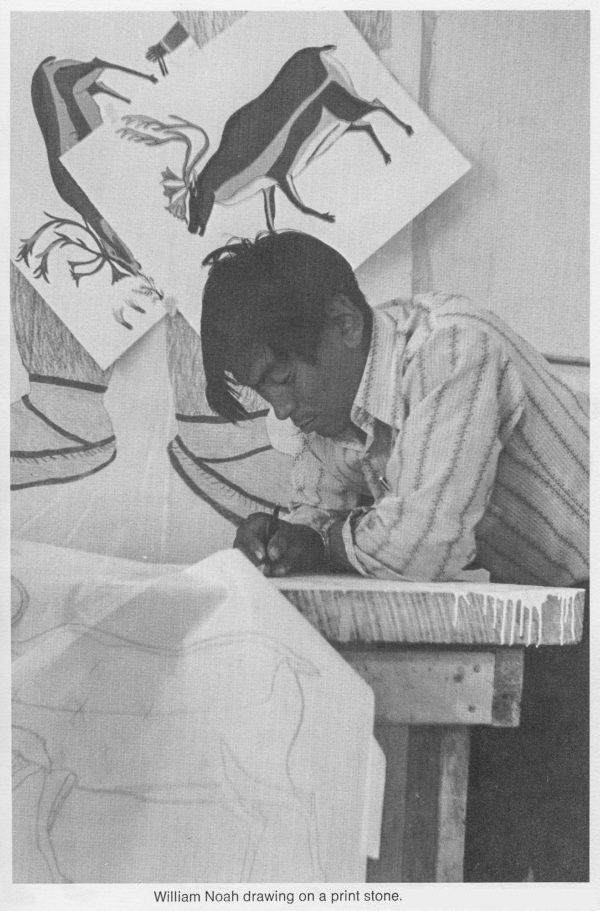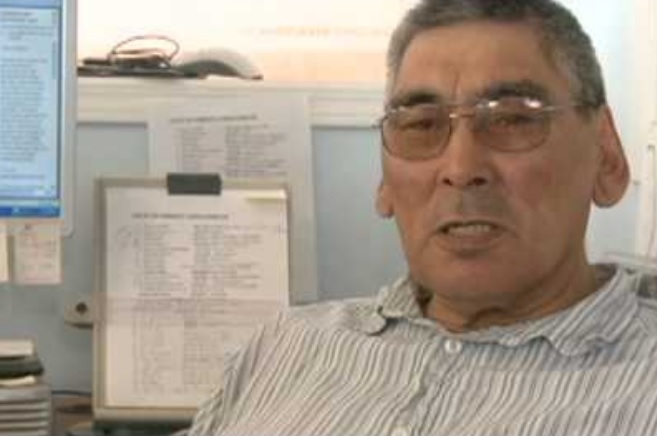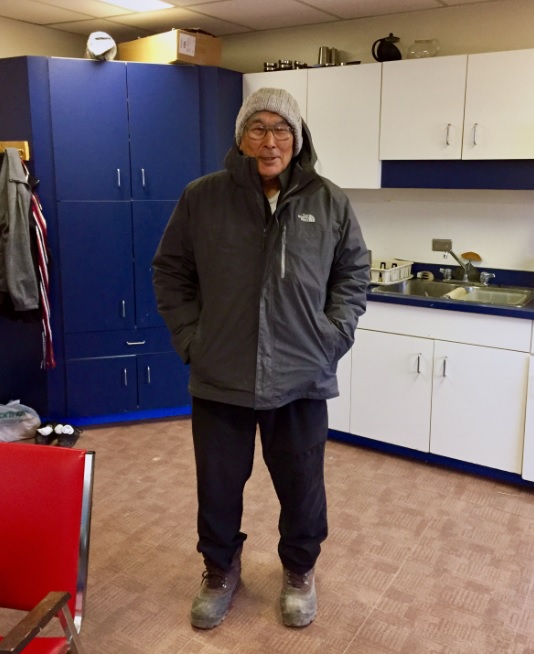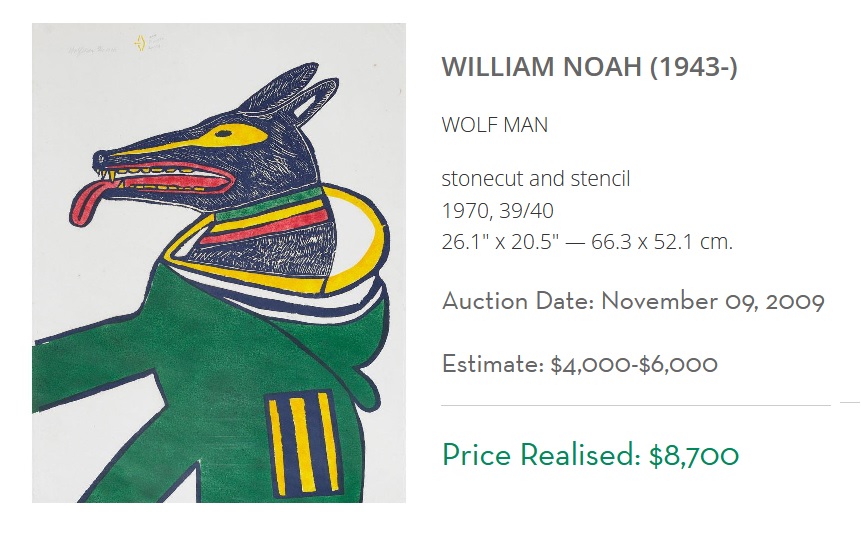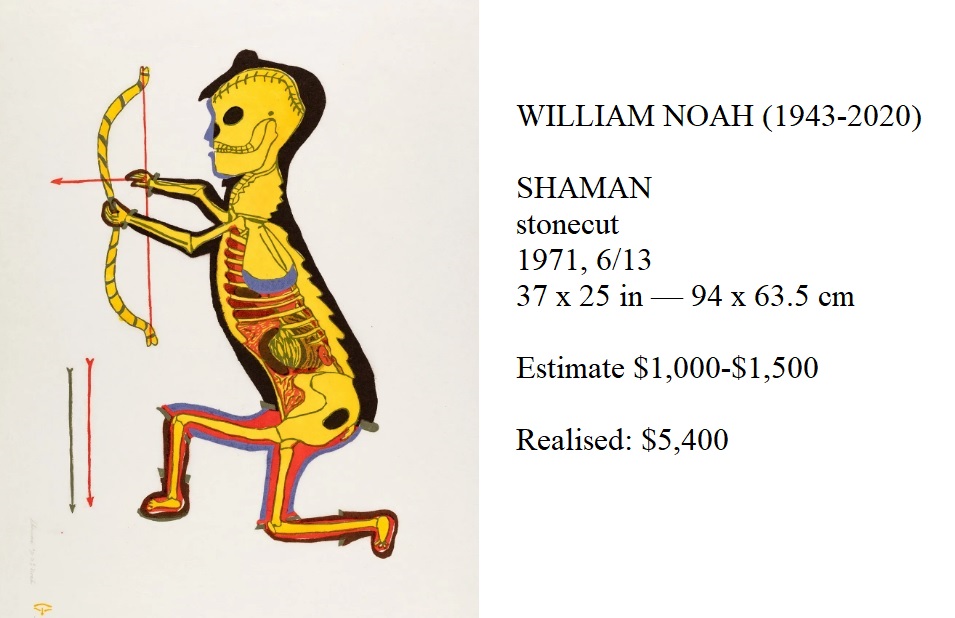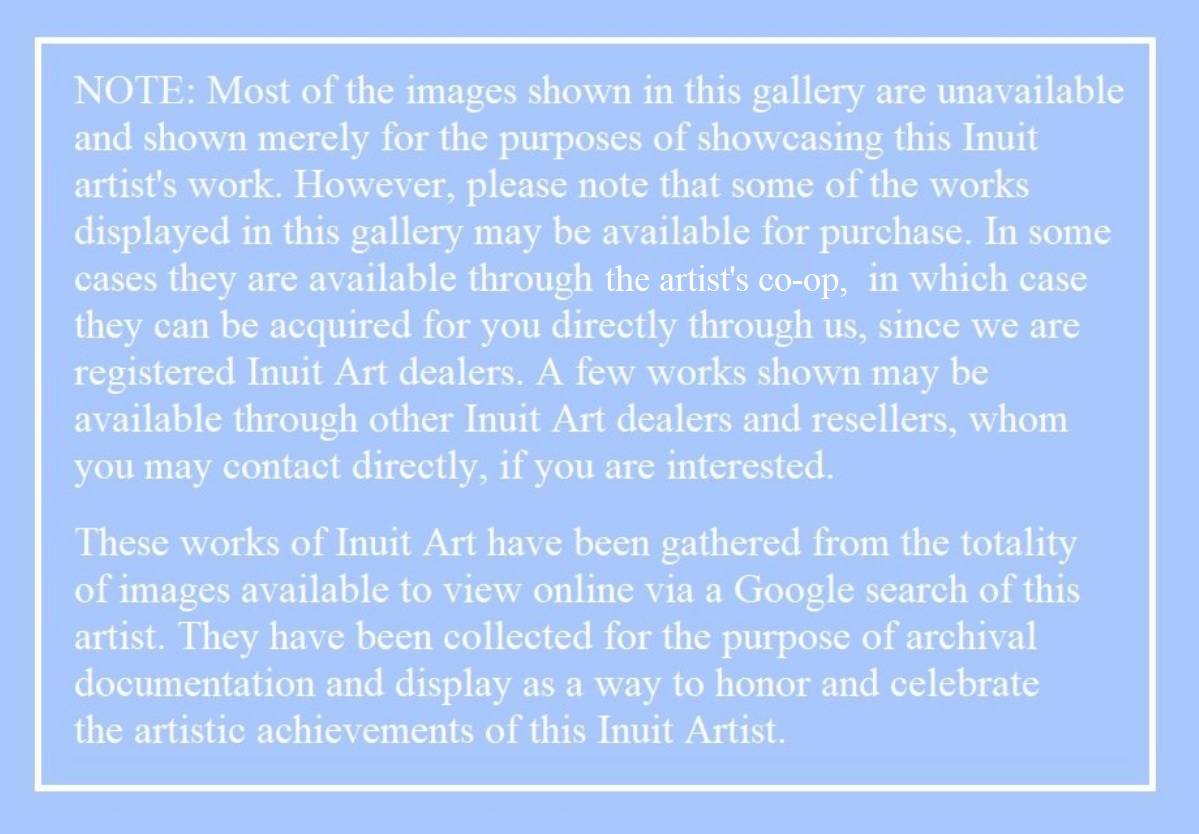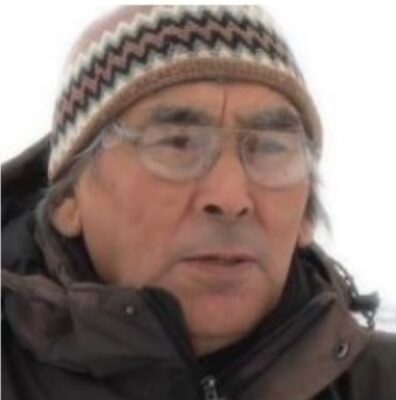
William Noah
William Noah was a rare breed, being both a politician and a talented visionary artist. He is the son of one of the most famous Inuit Artists in the world, Jesse Oonark. He could have followed in her footsteps artistically, trying to mimic her style, but instead he found his own artistic voice and vision which is entirely unique and singular. His prints have a hard edge precision, while his drawings have a loose impressionistic style.
As a lover of Inuit Art, and as a collector, what most drew me to Noah’s work, before I ever knew anything about him, was his X-Ray Vision into the human body, and into the bodies of animals and fish. It is one thing to depict the skeletal structure of men and animals in death. But I do not know of any other Inuit Artists who have depicted the skeletal and muscular structures of living beings in life and movement, as though using x-ray vision to see beyond the surface. In my view, this wonderfully insightful visionary work makes William Noah one of the most innovative and exceptional Inuit Artists of all time. Additionally, his drawings, which appear like plein-air impressionistic sketches, seem to beautifully capture the spirit of the landscapes, animals and people he depicts.
*****
William Noah was a graphic artist based out of Qamani’tuaq (Baker Lake), NU, who also worked in politics and was a prominent community member [1]. He was a member of the Northwest Territories Legislature from 1979–1982 and was elected mayor of Qamani’tuaq twice. He is the son of renowned artist Jessie Oonark RC, OCA and brother to many accomplished artists including Nancy Pukingrnak, Victoria Mamnguqsualuk (1930–2016) and Janet Kigusiuq (1926–2005).
When he was young, Noah’s mother encouraged him to draw and he began making works more consistently in 1963 and became a printmaker in 1965 [2]. Noah utilized photographs to create paintings and colourful pencil drawings using canvas, paper and sometimes plywood and worked with coloured pencils, acrylics, oils and digital prints. Shamanic references are a notable theme in Noah’s early work. These bold graphic works often depict shamans who, as apprentices, learn to rid themselves of flesh so that all that remains is their bones and internal organs [3]. In an artist interview, Noah described how we was interested in showing how humans and animals might look from the outside in. However, his main interest is in the Arctic landscape and the animals that inhabit it. His art often presents his own perspective of living in a settlement and engages with the urbanization of Qamani’tuaq.
In addition to his art practice, Noah has worked in arts administration, serving as the president of the Canadian Arctic Producers from July 1978 to May 1979 and as a former president of the Sanavik Co-operative. Noah’s work has been showcased around the world in dozens of exhibitions. The artist was also part of the exhibition Art and Cold Cash, a collaboration with Sheila Butler, Ruby Arngna’naaq, Patrick Mahon and Jack Butler [4]. Together they held a number of group exhibitions. Noah has contributed writing and pieces to two exhibition catalogues: Qamanttiaq: Where the River Widens, Drawings by Baker Lake Artists (1995), and the Exquisite Corpse Water Drawing Project (2014). He has pieces in the permanent collections of the National Gallery in Ottawa, ON, and the Canadian Museum of History in Gatineau, QC, among others.
(Source: InuitArtFoundation.org)

